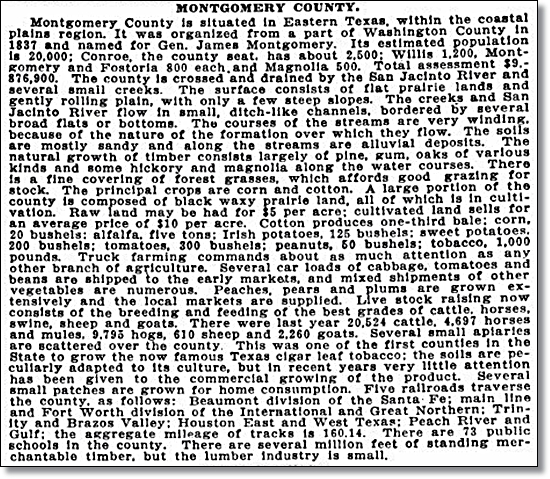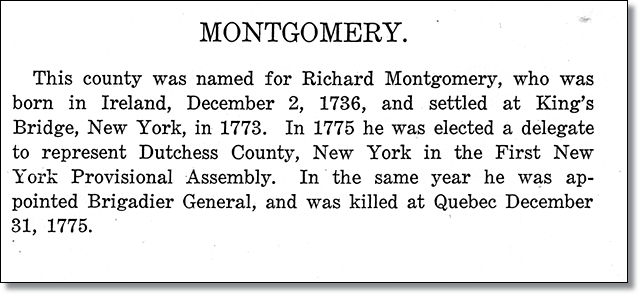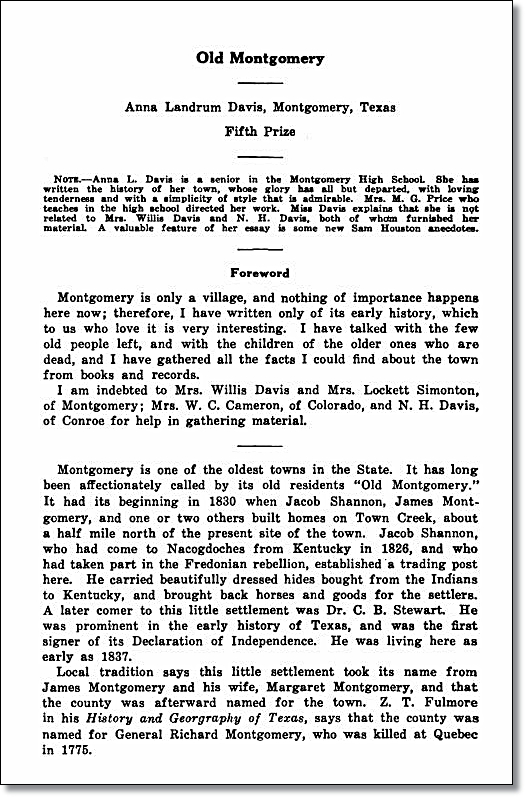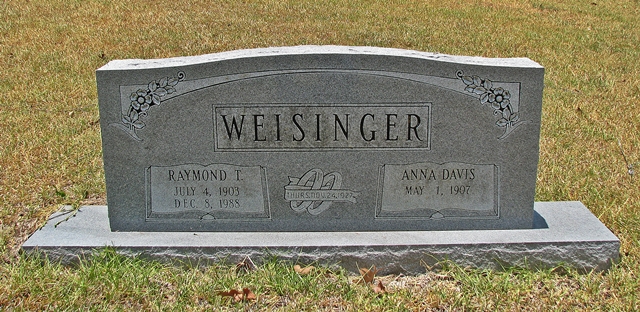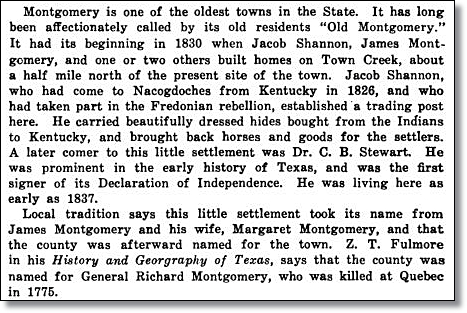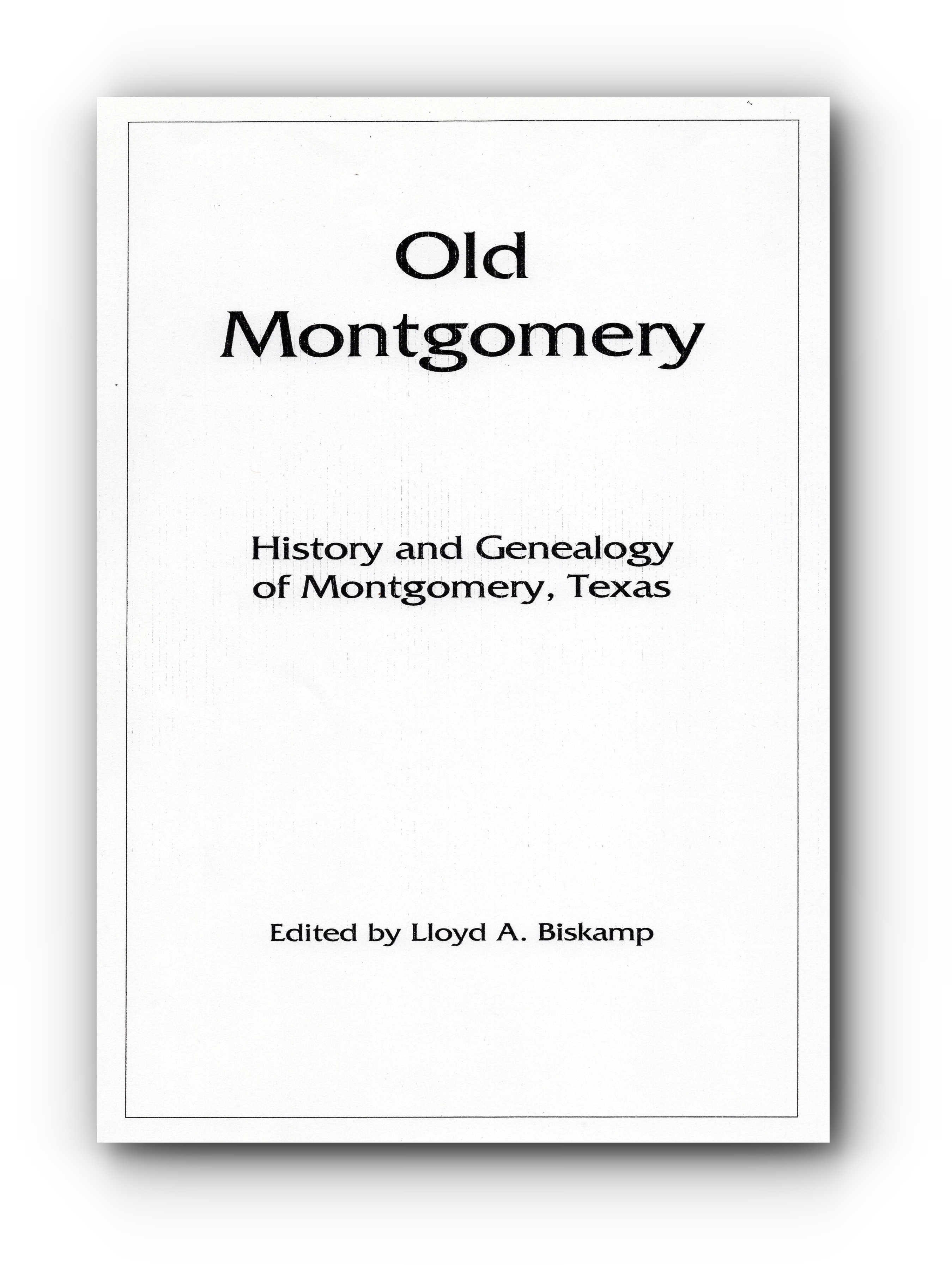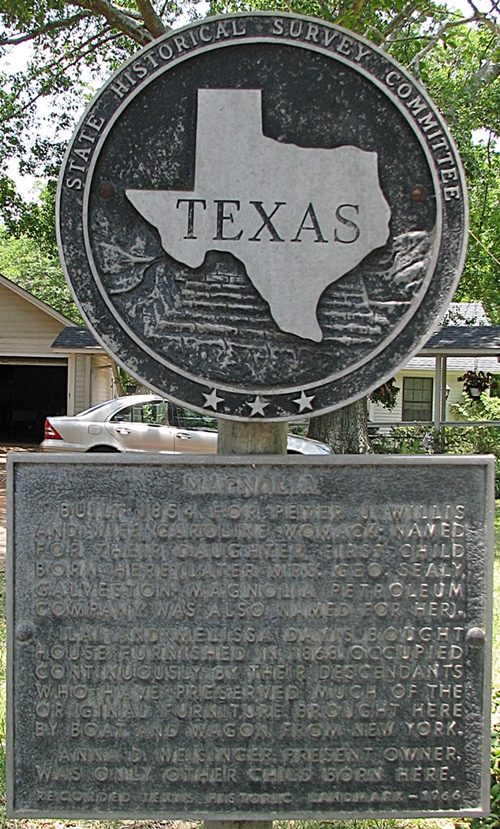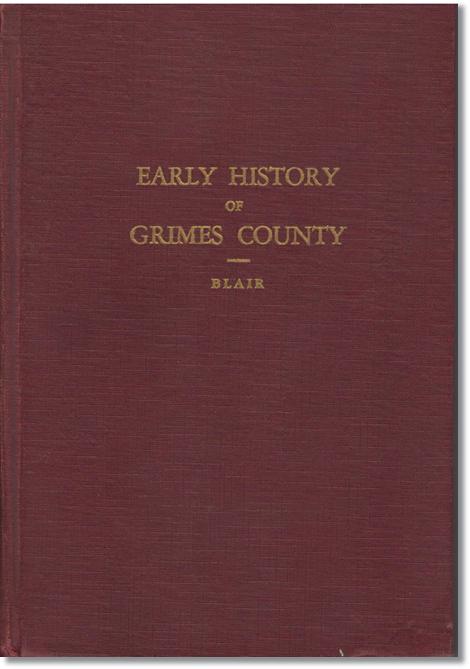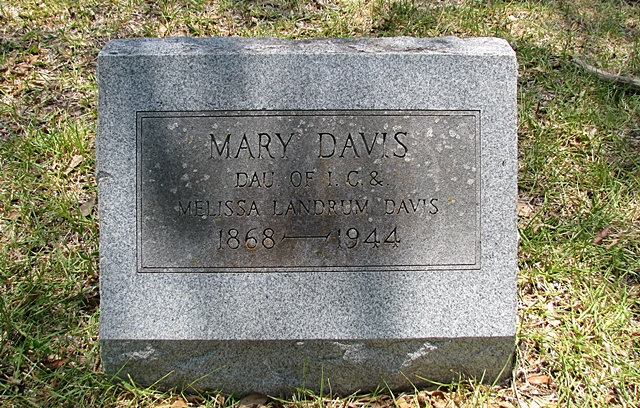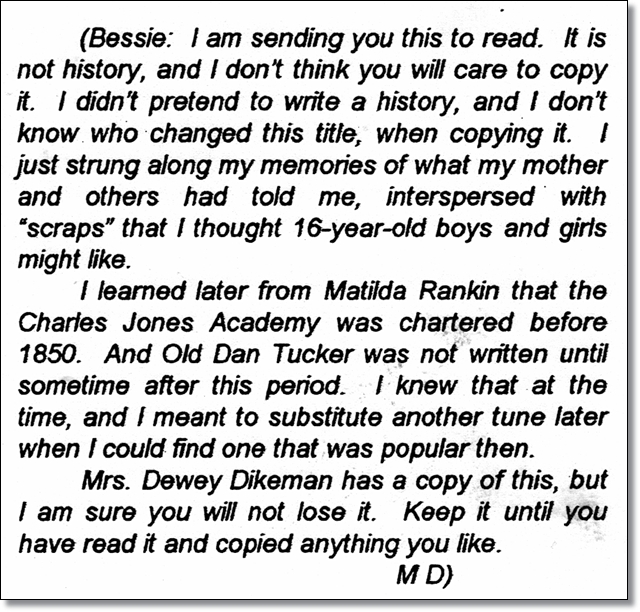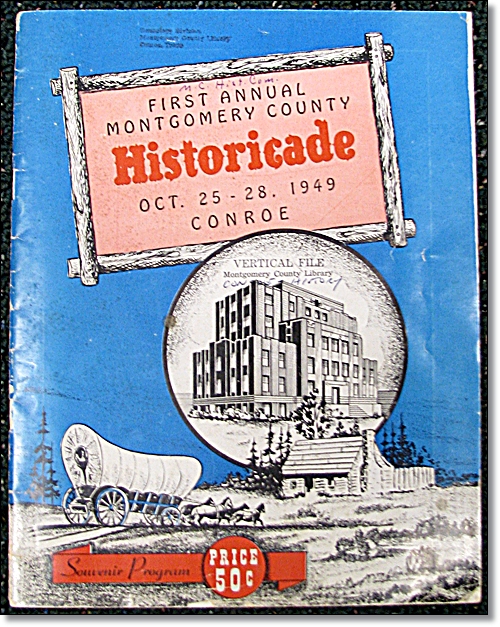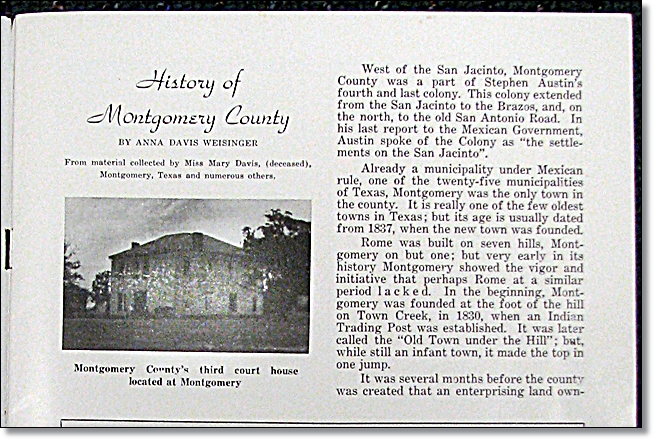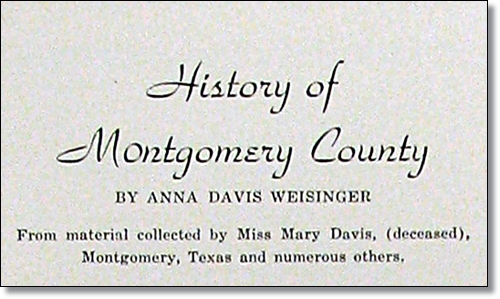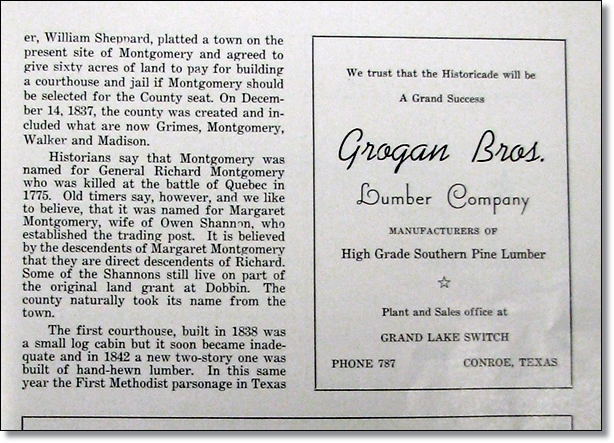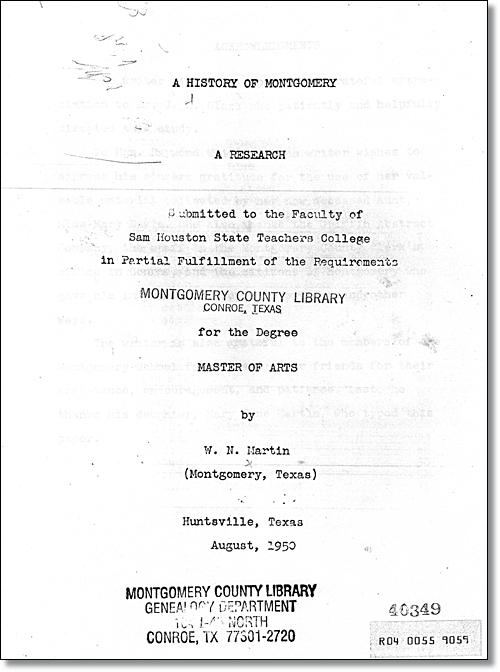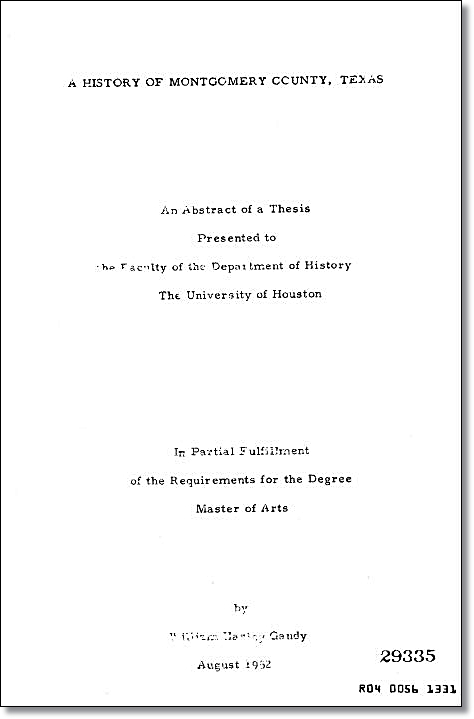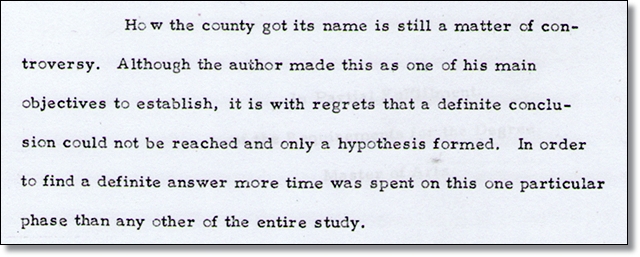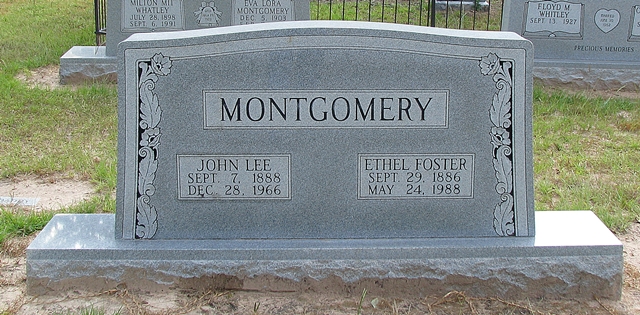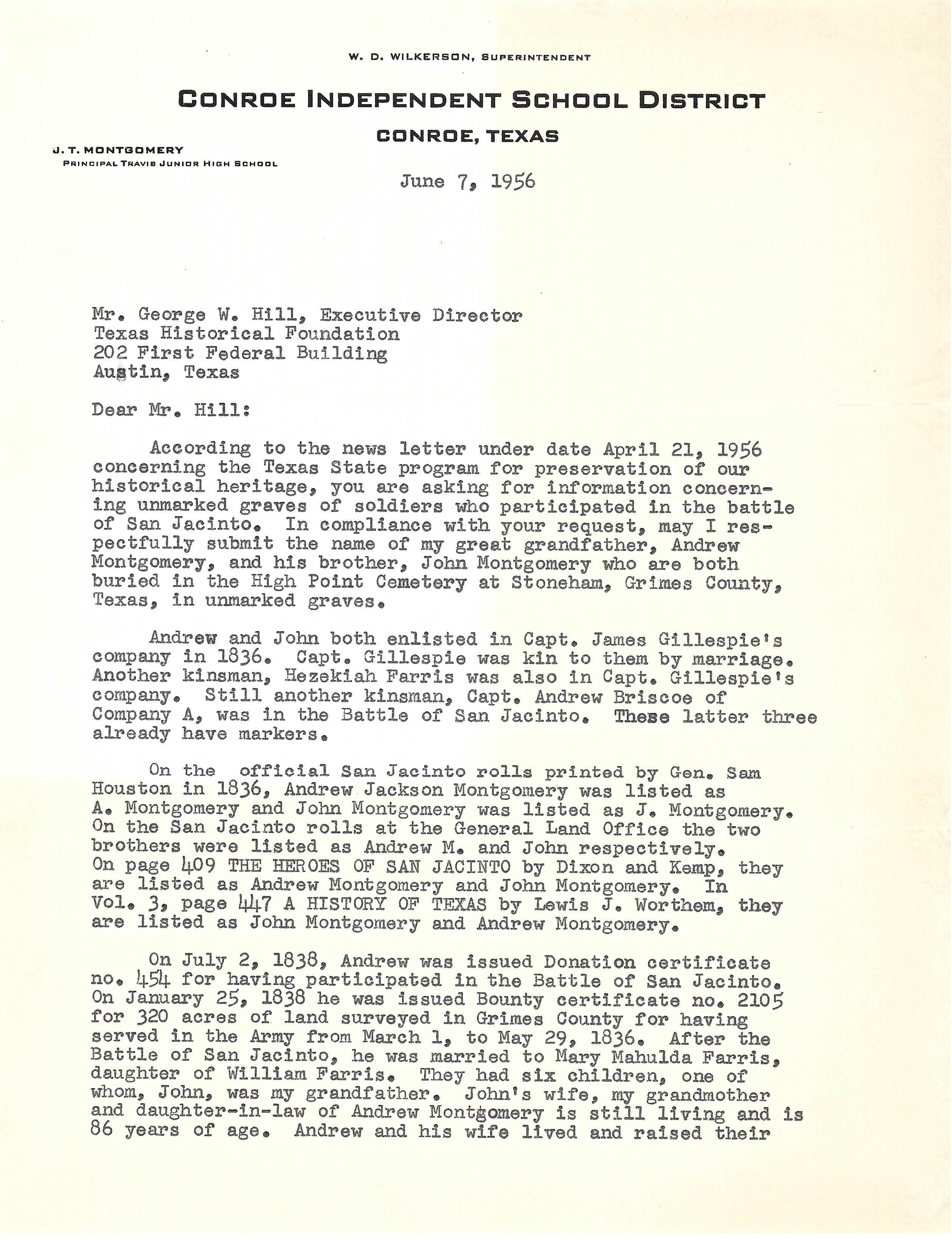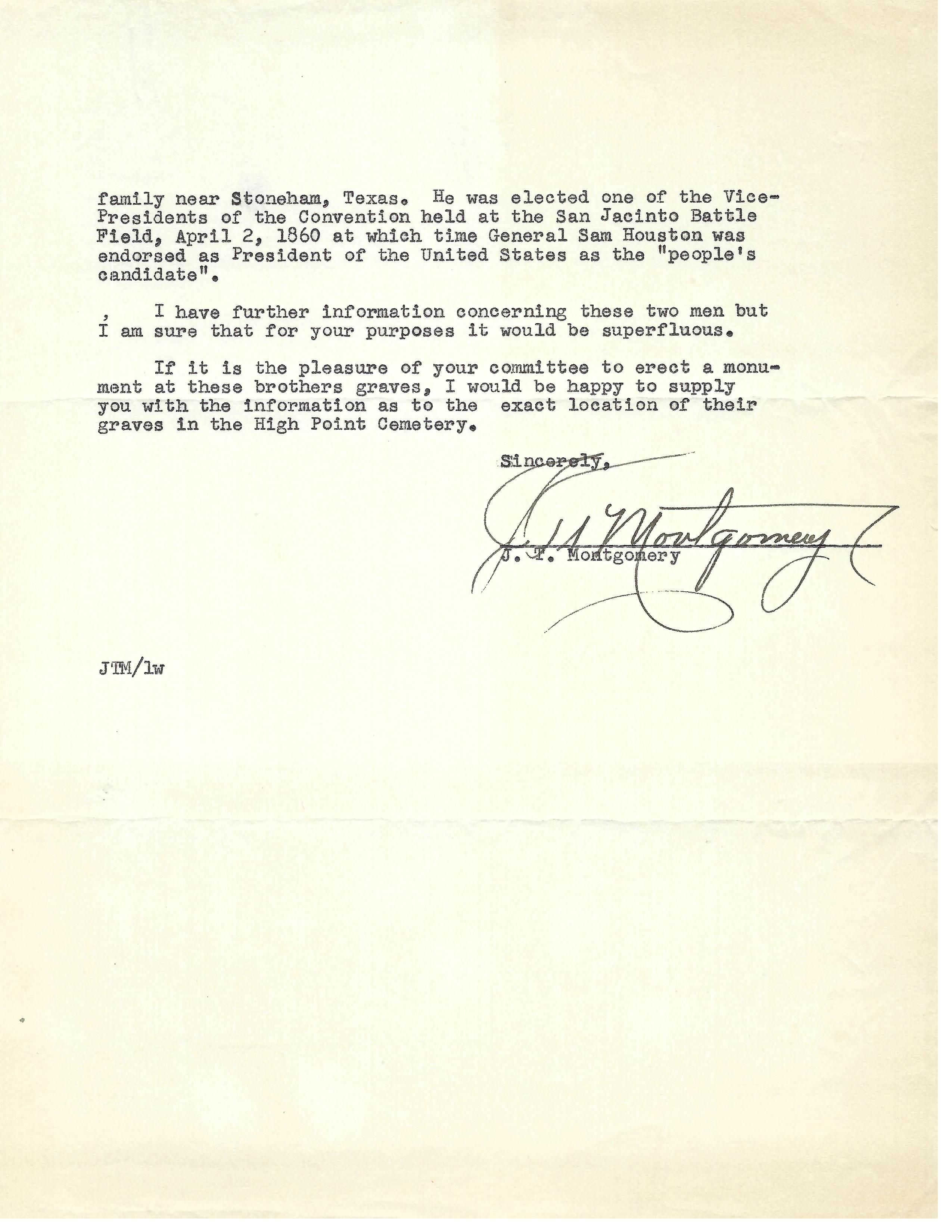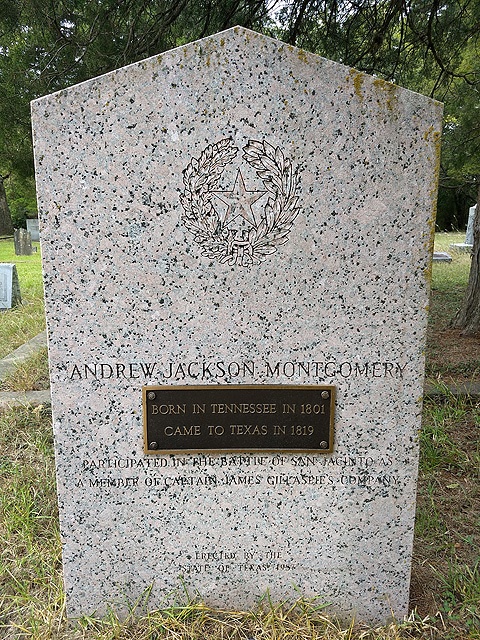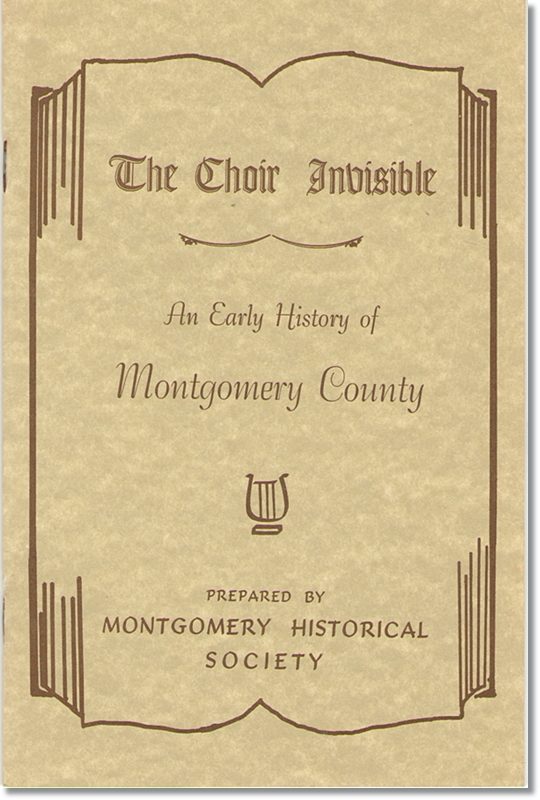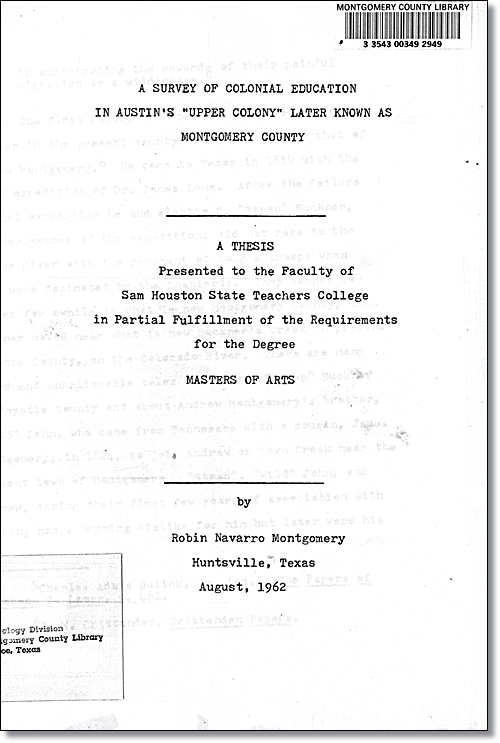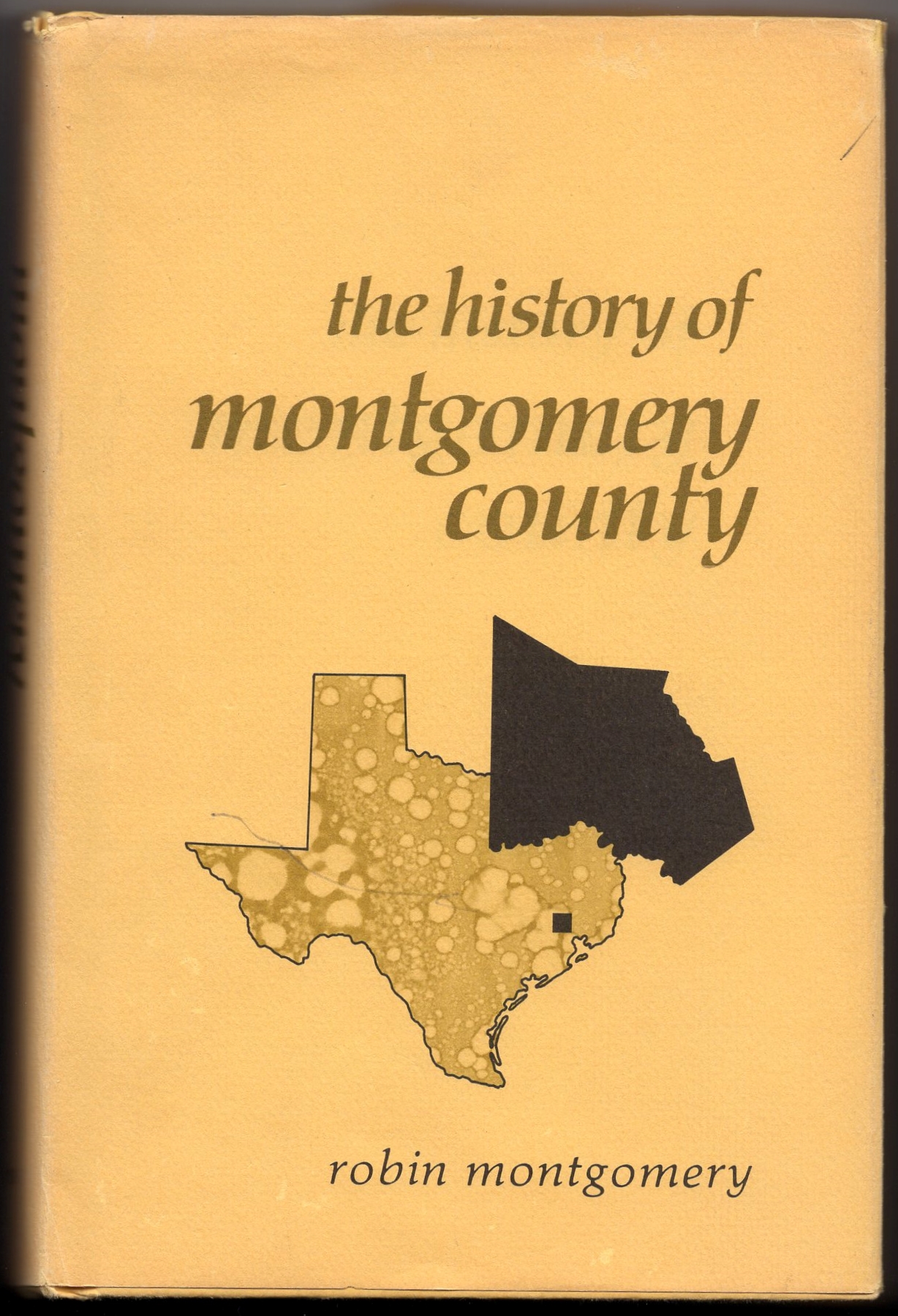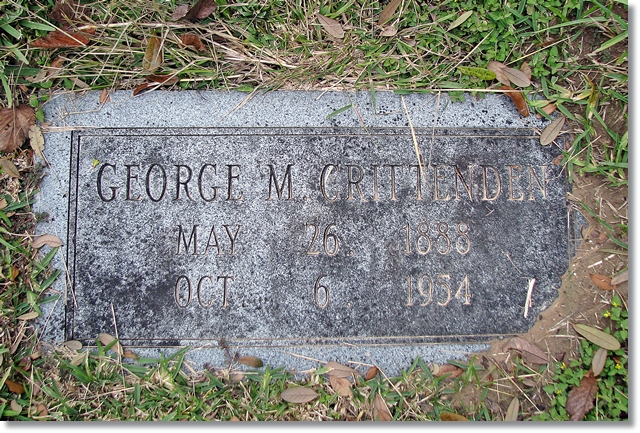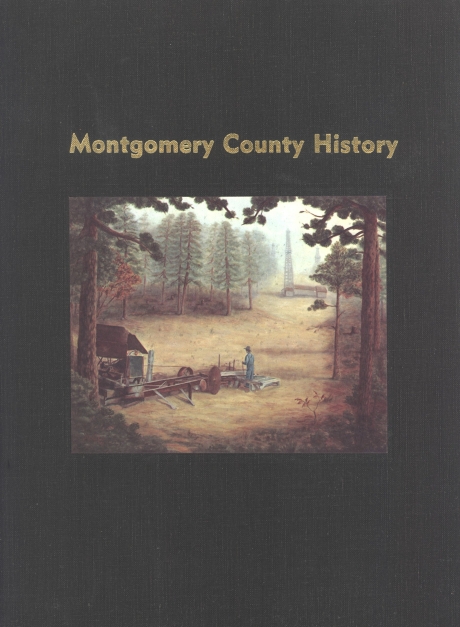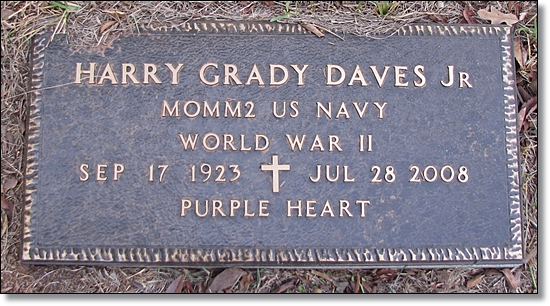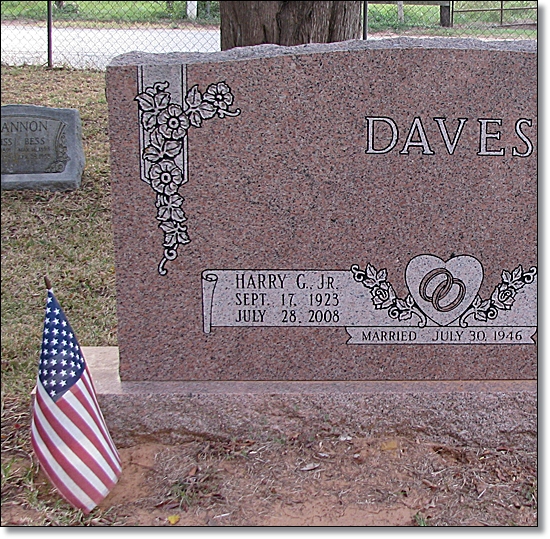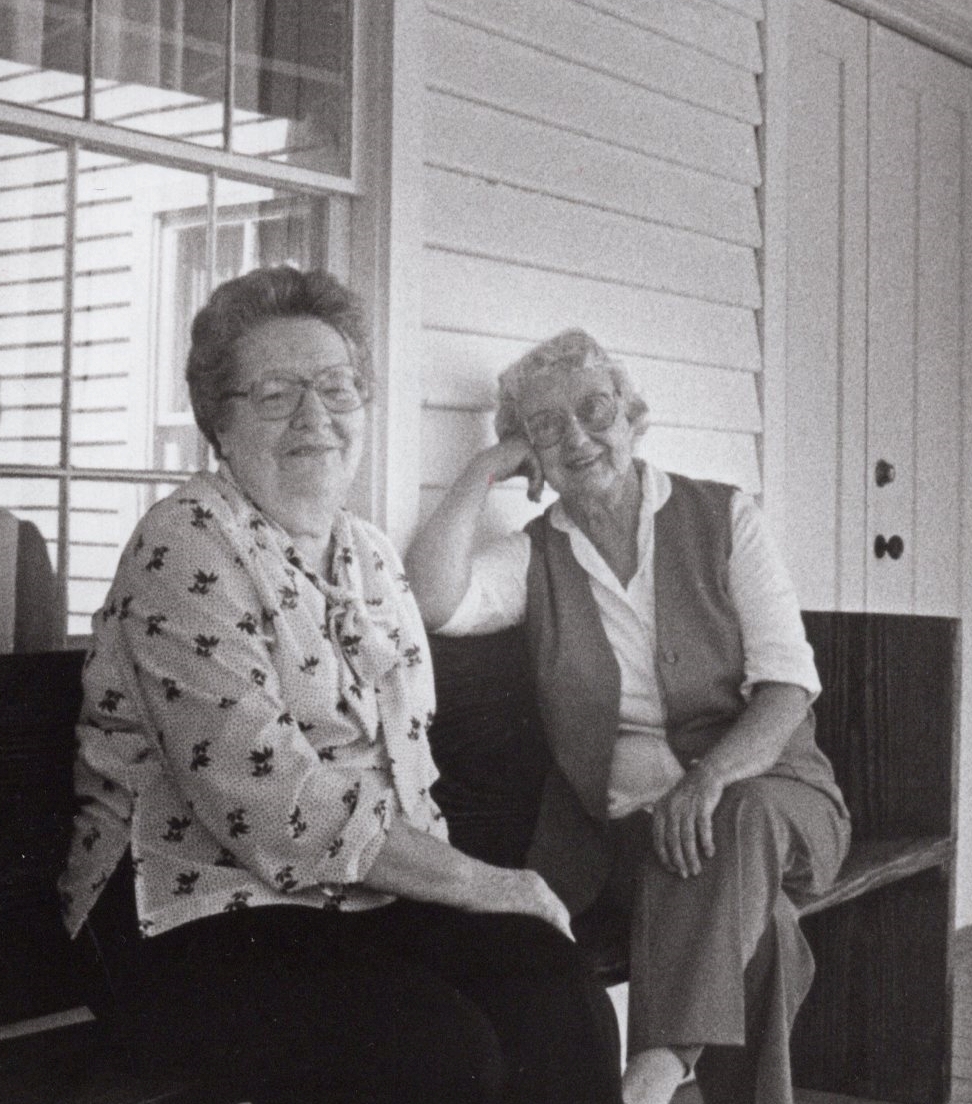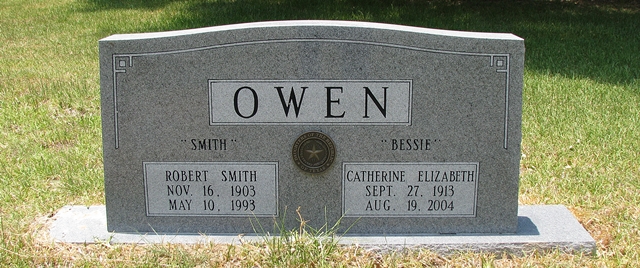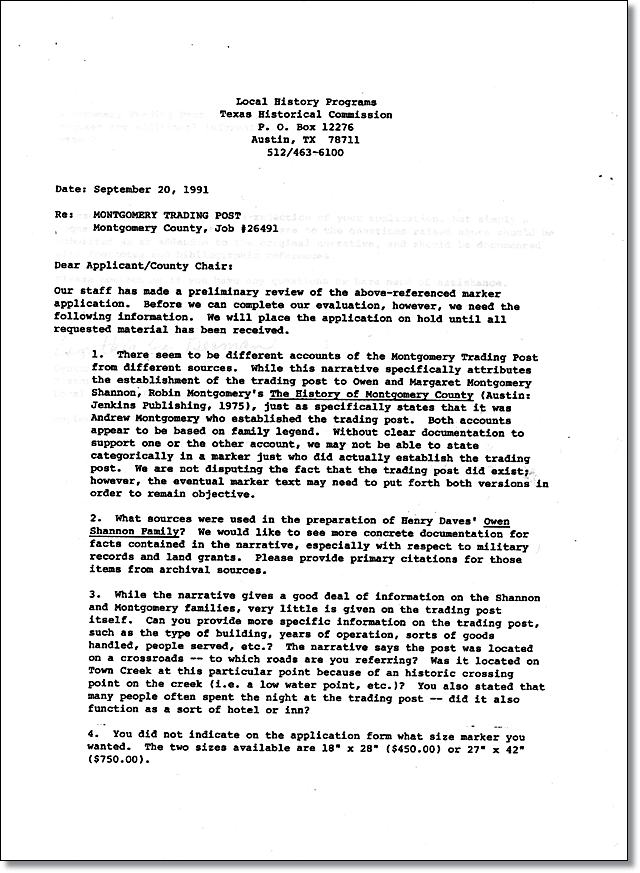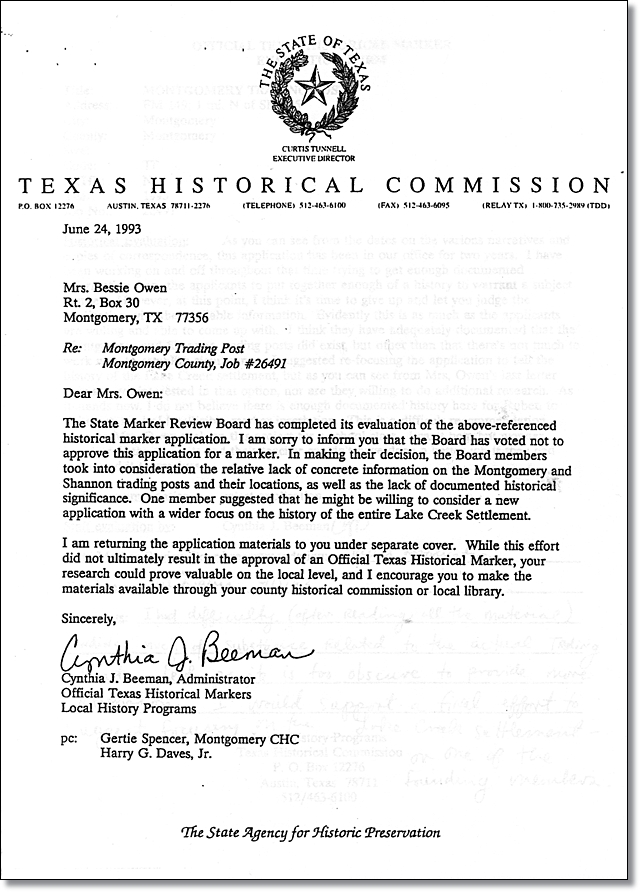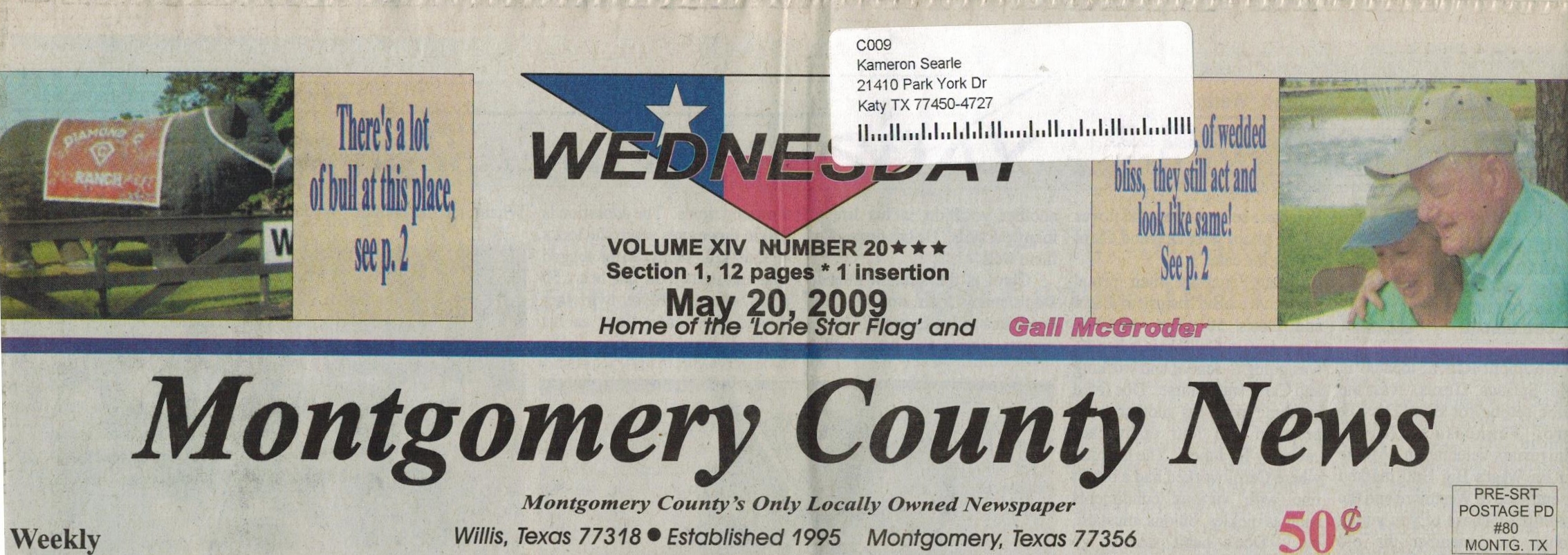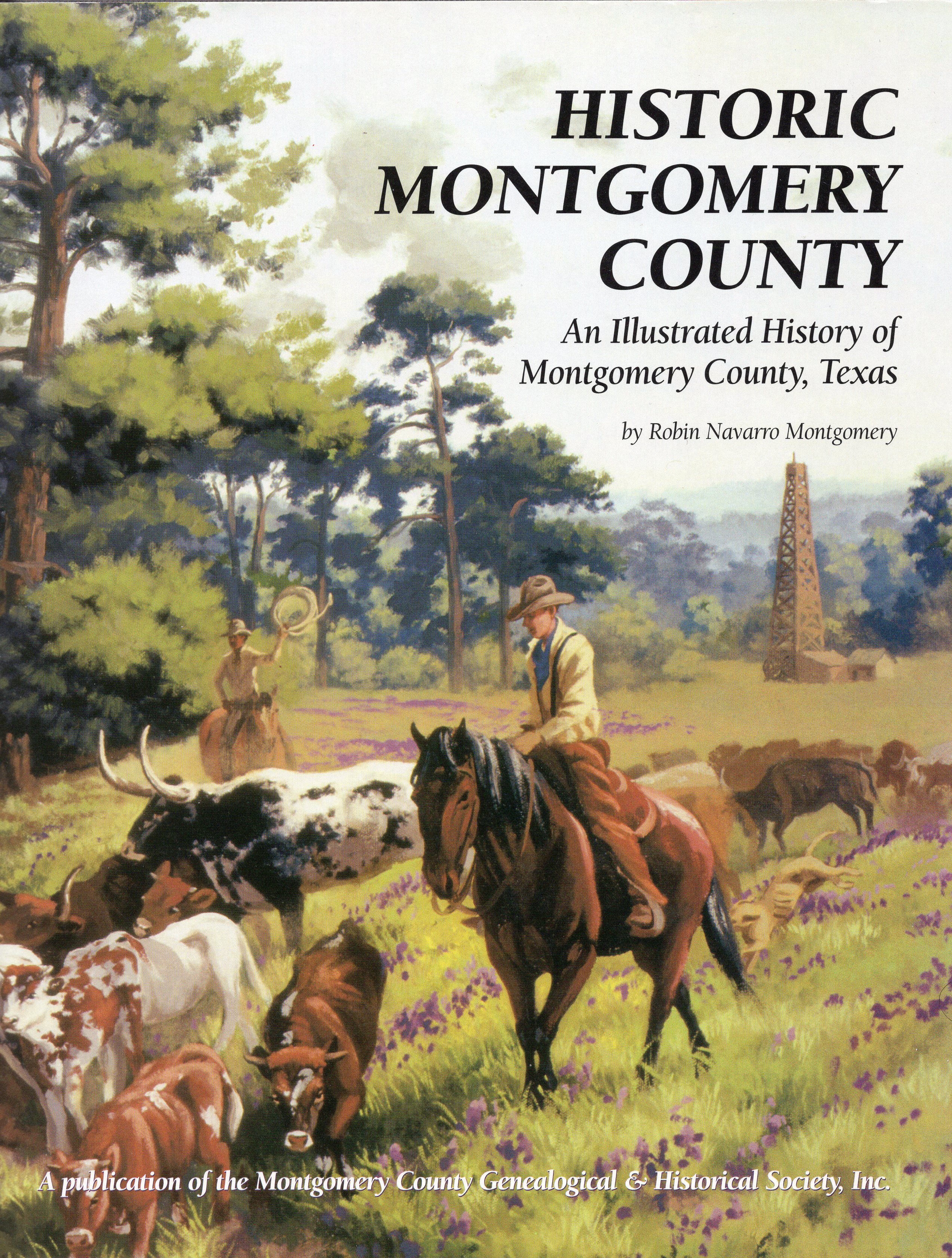
The Evolutionof theMontgomery Trading Post MythAn Exposé(From: The Early History of Montgomery County, Texas)by: Kameron Searle The Montgomery Trading Post is a great story, but a "story" is all it is. Just as a mirage contains no water, the Montgomery Trading Post accounts contain no historical evidence of a Montgomery Trading Post. Kameron K. Searle IntroductionHistory books reporting the history of Montgomery County, Texas have related romantic stories of a so-called "Montgomery Trading Post" for several decades. According to the stories, the early settlers of the area arrived to find a trading post engaged in trade with the local Indian tribes. As the stories go, the trading post became the cultural center of the settlement. Known as Montgomery Trading Post, the settlement and the lands around it became known as Montgomery Settlement and Montgomery Prairie prior to the founding of the town of Montgomery. When the town of Montgomery was founded nearby, the town naturally took its name from the trading post; and later when the county was created, Montgomery County took its name from the town. This is the general story of the Montgomery Trading Post. The Montgomery Trading Post is a great story, but a "story" is all it is. Just as a mirage contains no water, the Montgomery Trading Post accounts contain no historical evidence of a Montgomery Trading Post. The Montgomery Trading Post is actually a myth. As a newcomer trying to learn the history of the Montgomery Trading Post more than 20 years ago, I discovered that there were different versions of the Montgomery Trading Post story. What struck me as most curious at first was that no one else ever seemed to have noticed that the Montgomery Trading Post accounts did not agree in the most basic of details such as: location, ownership, and years of operation. As I dug ever deeper into primary historical sources which were readily available in the Montgomery County courthouse and elsewhere, all the Montgomery Trading Post accounts began to fall apart. There was simply no historical evidence whatsoever to back up the existence of a trading post called Montgomery Trading Post anywhere! If you have read the many different versions of the so-called Montgomery Trading Post story in the various histories of the town and county and have been confused, then this article will go a long way towards helping you understand how there came to be so many different versions of the story. This article shows in great detail how the legend or myth of the Montgomery Trading Post began, changed and developed over time. Artistic Rendering of an early Texas Trading Post by Marisa A. Searle
Why Expose the Montgomery Trading Post Myth? Definition of myth (noun) - a fictitious narrative presented as historical but without any basis of fact. I have been asked on several occasions why I have put so much time and effort into exposing the Montgomery Trading Post Myth. There are three reasons why I have researched, studied and exposed the Montgomery Trading Post Myth in so much detail.
I have done over a decade's worth of research into the early history of Montgomery County. In collecting and gathering the evidence of that history, I am no longer satisfied in just relating the corrected history of the town and county of Montgomery. As so much information was found to be wrong in the previously written histories, I am now compelled to write the history of those histories to show what happened, i.e. how the early history of the town and county got so far off the tracks. The goal here is to show when and how the errors either crept in or were forcibly and intentionally shoved into the history. In this section we will look at the origin of the Montgomery Trading Post Myth and its evolution over time. First, we will look at a brief synopsis of the true details of the actual trading post that did precede the founding of the town of Montgomery, Texas. We will then look at the first documents that began to fictionalize the history of the trading post by substituting erroneous details for the true facts. Beginning with the earliest accounts that mention the fictionalized details of the trading post, we will watch the trading post's ownership, location, date of founding and other details evolve over about an eighty year period. It is very important to note here that there was in fact a trading post or store that preceded the founding of the town of Montgomery, Texas. Founded in 1835, it was located about a half mile north of the present site of the town of Montgomery under the hill on the creek that later became known as Town Creek. Click here to read the detailed history of The Indian Trading Post that Became the Town of Montgomery, Texas and The Lake Creek Settlement. In reality the name I have given the Montgomery Trading Post Myth is a bit of a misnomer. There is not just one Montgomery Trading Post Myth. There are almost as many different versions of the Montgomery Trading Post story as there are historians who have previously written about it. As we will see, each historian changed the story a little. Some of these historians changed the story a lot. In reading these histories of the so-called Montgomery Trading Post, it becomes eminently clear that each of these historians either:
As these historians did not look at primary sources with regard to the trading post, they were not confined by the actual facts and could freely speculate and embellish as creatively as they pleased. There Was No Montgomery Trading Post But There Was a Trading Post! The Store of W. W. Shepperd on Lake Creek
Facts are stubborn things; and whatever may be our wishes, our inclinations, or the dictates of our passion, they cannot alter the state of facts and evidence. John Adams Timeline of Actual Facts
January 1, 1831 - William C. Clark purchased 600 acres of land from John Corner. - September 15, 1835 - W. W. Shepperd bought 200 acres of land from William C. Clark out of the 600 acres Clark purchased from John Corner. These 200 acres of land were located in the northwestern-most corner of the John Corner League. - 1835 - W. W. Shepperd Founded the Store/Trading Post on the creek on the 200 acres of land purchased from William C. Clark. The store would be known as "the store of W. W. Shepperd on Lake Creek." - 1836 - Citizens of Washington County east of the Brazos petitioned the Congress of the Republic of Texas to create a new county to be called "Travis County." The "Travis County" bill did not pass. - July 1837 - Town of Montgomery founded by W. W. Shepperd in association with J. W. Moody. This was the "Old Town" of Montgomery "under the hill." Shepperd and Moody named the town Montgomery after Montgomery County, Alabama where Moody had lived for many years and been the County Clerk of Montgomery County, Alabama before coming to Texas. - 1837 - Citizens of Washington County east of the Brazos Petition the Congress of the Republic of Texas for the creation of a new county with "No Name." Republic of Texas Congress names new county Montgomery after the Town of Montgomery. - December 14, 1837 - President Sam Houston signs Act into law and Montgomery County is Created. Town of Montgomery "under the hill" selected as County Seat of Montgomery County by nine Commissioners. - February 26, 1838 - Shepperd Buys 212 Acres from John Corner. This land is on a hill just south of the town of Montgomery. - March 1, 1838 - First Montgomery County Commissioners' Court meeting held. W. W. Shepperd through his agent, Charles B. Stewart, donates a half undivided interest in 200 of the 212 acres purchased from John Corner on the hill to the county. At the same time the Montgomery County Commissioners' Court accepts the land donation, the Commissioners moved the site of the Town of Montgomery to these 200 acres. This location will be known as the "New Town" of Montgomery "on the hill." - August 20, 1839 - Major John Wyatt Moody dies in Houston. Many of the specific details of the founding of the town and the creation of the county die with him. - 1849 - W. W. Shepperd dies in Montgomery County. Many of the specific details of the founding of the original trading post, the founding of the town, and the creation of the county die with him. - 1885 - Charles B. Stewart dies in Montgomery, Texas. Many of the specific details of the founding of the original trading post, the founding of the town, and the creation of the county dies with him.
Erroneous details began to slip into historical accounts as people speculate and guess the details to fill in the blanks such as the source of the name of the town and county. Over time the Montgomery Trading Post Myth was born.
Below is the most complete history of the Montgomery Trading Post Myth ever written, but first let us look at some early attempts to explain where the name of Montgomery County came from. In Between the Truth and the Montgomery Trading Post Myth The Introduction of General Montgomery
"I am the very model of a modern Major-General."
1879 Homer S. Thrall A Pictorial History of Texas General Montgomery The Montgomery Trading Post Myth was not the first attempt by historians to explain how Montgomery County, Texas got its name. Between the time of the actual historical events in the 1830's and the introduction of the Montgomery Trading Post Myth, other attempts were made to explain the source of the name of Montgomery County, Texas. For instance, in 1879, Homer S. Thrall published A Pictorial History of Texas (1879, St. Louis, N. D. Thompson & Co.), p. 685. This may be the earliest example of an historian trying to explain the source of the name of Montgomery, County. In the section regarding "County Sketches" on page 685, Thrall wrote:
Homer S. Thrall does not cite a single primary source for his assertion that Montgomery County was named for someone named General Montgomery. Thrall does not even provide a given name for General Montgomery. The next two sources attempt to provide a given name for General Montgomery but they do not agree.
1910 Texas Almanac and State Industrial Guide General James Montgomery The 1910 edition of the Texas Almanac and State Industrial Guide published by (The Galveston-Dallas News/A. H. Belo & Co., 1910), p. 240, provided the following:
MONTGOMERY COUNTY
Here the 1910 Texas Almanac and State Industrial Guide provides a given name for General Montgomery, but just who General James Montgomery may have been is left to speculation. Like Homer S. Thrall before them, the editors of the Texas Almanac and State Industrial Guide did not cite a single primary source to prove Montgomery County was named after the mysterious General James Montgomery.
1915 Z. T. Fulmore The History and Geography of Texas as Told in County Names General Richard Montgomery The oft-cited Z. T. Fulmore provided more details regarding General Montgomery in his book The History and Geography of Texas as Told in County Names (Austin, Texas, E. L. Steck, 1915). Also see 1935 edition of The History and Geography of Texas as Told in County Names (Austin, Texas, The Steck Company, 1935). In Chapter 3, on page 64 of the 1915 edition, Fulmore provides the following information regarding the naming of Montgomery County, Texas:
Decades later, Fulmore attempts to fill in some of the blanks regarding the "General Montgomery" that Thrall introduced in 1879. Sadly, Fulmore, like Thrall and the Texas Almanac and State Industrial Guide, provided no primary sources for his information about the naming of Montgomery County. Fulmore completely shirked his duty as historian in that he, like those before him, failed to provide any sources for his write-up for Montgomery County. In the Preface, he unabashedly waives his responsibility with the following comment on page iv:
Evidently it was not "deemed proper" for the write-up on Montgomery County as no bibliographical information was "given in the body of the text." This would not stop local historians from mentioning General Richard Montgomery over and over again in the years to come. Beginning in 1925, General Richard Montgomery would be mentioned in local histories as a possible source of the name of Montgomery County. As popular as the Montgomery Trading Post story would become, General Richard Montgomery has almost always been mentioned as a possible source of the name of the county. In 1936, to commemorate the centenary of Texas Independence, several monuments were erected by the State of Texas in Montgomery County, Texas. One of these monuments was erected 4 miles north of Conroe on U.S. Highway 75. This monument reads as follows:
MONTGOMERY COUNTY CREATED FROM WASHINGTON COUNTY DECEMBER 14, 1837 ORGANIZED SAME YEAR NAMED IN HONOR OF RICHARD MONTGOMERY 1736-1775 BRIGADIER GENERAL IN THE CONTINENTAL ARMY COUNTY SEAT, MONTGOMERY, 1837 CONROE, SINCE 1888 __ TEXAS HIGHWAY DEPARTMENT 1936 4.4 Miles North of Conroe, Texas on SH Hwy 75 This marker is located on Texas State Highway 75 (SH 75). In Conroe, Texas, SH 75 is called Frazier Street. The Montgomery County, Texas centennial marker is located 4.4 miles north of downtown Conroe on the west side of SH 75 in a highway rest area.
1922 - A Member of the Charles B. Stewart Household Speaks Out "...There were at that time a few of the descendants of the original settlers of this county who came with their parents to this section as colonists, but were altogether ignorant of the organization of the old 'principality' of Montgomery...W. W. Shepperd was the first to have a store at the old town of Montgomery under the hill. It [the town] was later moved to its present location." Edmund B. Stewart Edmund B. Stewart Letter to Mrs. J. W. Brosig On July 7, 1922, Edmund B. Stewart of Montgomery, Texas, wrote a letter to Mrs. J. W. Brosig of Navasota, Texas. Historians in the town of Montgomery and in Montgomery County have cited this letter for decades to prove the provenance (history of ownership) and authenticity of Charles Bellinger Stewart’s drawing of the Lone Star flag of Texas. Edmund B. Stewart was the son of Charles B. Stewart and his second wife, Elizabeth Antoinette Boyd. This letter originally appeared in an article, “Original Flag of Texas Shown Here Tomorrow,” in the August 11, 1922, Daily Examiner newspaper published in Navasota, Texas. This July 7, 1922 letter was the letter in which Edmund B. Stewart transferred the "original draft" of the Lone Star flag drawn by Charles B. Stewart to Mrs. Brosig to display in her hardware store in Navasota. Edmund B. Stewart wrote,
See the Dr. Charles Bellinger Stewart Family Papers, Houston Metropolitan Research Center, [Texas Room, Julia Ideson Building, Houston Public Library, Houston, Texas. There were only three men that had an active role in the founding of the trading post and/or the town of Montgomery: W. W. Shepperd, J. W. Moody and C. B. Stewart. C. B. Stewart had been married (March 11, 1836) to his first wife, Julia Shepperd, on the land that became the original site of the town of Montgomery under the hill (July 1837). C. B. Stewart had owned land in the original town of Montgomery under the hill. Julia Shepperd, C. B. Stewart's first wife, was the daughter of William W. Shepperd who founded the original town of Montgomery under the hill. C. B. Stewart helped locate the site of the town of Montgomery at the its new location on the hill on March 1, 1838 at the first Montgomery County Commissioners' Court meeting. Edmund B. Stewart grew up listening to his father, C. B. Stewart who was an eye-witness to the events surrounding the founding of the town of Montgomery. Edmund B. Stewart's letter is also well corroborated by a large number of primary historical documents. Edmund B. Stewart was born June 26, 1852. E. B. Stewart was the son of Charles Bellinger Stewart and his second wife, Elizabeth Antoinette Boyd. When C. B. Stewart died in 1885, E. B. Stewart was 33. In 1922, Edmund B. Stewart points out in his letter to Mrs. Brosig that "...the descendants of the original settlers of this county...are altogether ignorant of the organization of the "principality" of Montgomery..." It would appear that Edmund Stewart had already begun hearing the folklore that was beginning to circulate regarding the original trading post and the source of the name of the town of Montgomery. The Montgomery Trading Post Myth is about to make its appearance. The Anna Landrum Davis history essay, Old Montgomery, will be written 3 years later in 1925 (see below). The Edmund B. Stewart letter to Mrs. J. W. Brosig pre-dates the Anna Landrum Davis history essay [Old Montgomery] by three years making his letter the earliest local historical account that has yet been discovered.
Evolution of the Montgomery Trading Post Myth
The Myth The Montgomery Trading Post
"All history, so far as it is not supported by contemporary evidence, is romance."
A history, whose author draws conclusions from other than primary sources or secondary sources actually based on primary sources, is by definition fiction and not history at all."
Local tradition says this little settlement took its name from James Montgomery and his wife, Margaret Montgomery, and that the county was afterward named for the town."
1925 - Anna Landrum Davis Local History Essay "Old Montgomery" Source of Name of Town: James Montgomery and his wife, Margaret Montgomery
University of Texas Bulletin No. 2546: December 8, 1925 Page 42, The Texas History Teachers' Bulletin, Volume XIII, Number 1 The Montgomery Trading Post Myth began to take shape in 1925. In 1925, Anna Landrum Davis submitted an essay, Old Montgomery, for a statewide local history contest called the Caldwell Prize. Strongly influenced by her aunt, Mary Davis, Anna Landrum Davis, a senior high school student, would be the first local historian to attempt to suggest a source of the name of the town of Montgomery, Texas in written form.
Anna Davis Weisinger May 1, 1907 - April 30, 2005 The headstone of Anna Landrum Davis Weisinger in the New Cemetery in Montgomery, Texas provides a birth date of May 1, 1907. However, her death date has never been inscribed on the headstone. The Social Security death record for Anna D. Weisinger of Montgomery, Texas, SSN: 449-28-6928, reflects a birth date of May 1, 1907 and a death date of April 30, 2005. She was just a couple of days shy of her 98th birthday. [Note: Since Anna Weisinger had no children and her husband preceded her in death, it would be a great project for the Montgomery Historical Society to inscribe her death date on her headstone. With as much as Anna did to try and preserve the history of the town of Montgomery, it would be a nice gesture if the town of Montgomery preserved this little piece of Anna's own history.] Anna Landrum Davis was an orphan who lived with her financially poor maiden aunt, Mary Davis, in Montgomery, Texas. Anna's grandfather had been a well-to-do local merchant named Ilia Davis, but by the time Anna was in high school, Anna Landrum Davis and Mary Davis had fallen on very hard times. As a Senior in the high school in Montgomery, Texas in 1925, Anna Landrum Davis entered a history essay in a statewide local history contest called the Caldwell Local History Prize. The essay Anna Landrum Davis entered in the contest won 5th prize. The paper Anna Landrum Davis submitted was titled Old Montgomery. Click here to see the complete essay Old Montgomery. Also see the December 3, 1925 edition of the Dallas Morning news which printed the entire essay in Part Two on page nineteen. This 1925 essay Old Montgomery is extremely significant in that it introduced the world to the mistaken idea that the town of Montgomery, Texas was named after some local family named Montgomery. Below are excerpts from the 1925 essay Old Montgomery regarding the trading post and the origin of the name of the town and county. It is interesting to note that the 1925 essay Old Montgomery does not actually refer to the trading post as the Montgomery Trading Post. That addition will come later. In fact Old Montgomery does not refer to the trading post as "Indian trading post" either. In reading these excerpts, the reader is reminded that this is a high school essay paper and most of what is highlighted below in this quote is not true. Do not rely on these excerpts as valid history.
Old Montgomery by Anna Landrum Davis
Typical of many of the histories that follow, General Richard Montgomery gets mentioned as a possible source for the name of the county. See University of Texas Bulletin No. 2546: December 8, 1925, page 42, The Texas History Teachers' Bulletin, Volume XIII, Number 1. Note that in 1925, the essay Old Montgomery clearly states that it is "local tradition" that "says this little settlement took its name from James Montgomery and his wife, Margaret Montgomery, and that the county was afterwards named for the town." This one element regarding the source of the name of the town and the county will evolve several times over the next 50 years. According to the essay Old Montgomery, the Indian trading post was established by Jacob Shannon. This element will also evolve drastically over the next 50 years. It is also very important to note that in this first telling of the story in Anna Landrum Davis' essay in 1925 that "local tradition says this little settlement took its name from James Montgomery and his wife, Margaret Montgomery, and that the county was afterwards named after the town." The essay also provides that "Jacob Shannon...established a trading post here." Just who James Montgomery was supposed to have been is confusing. Stephen F. Austin, did not give a grant of land to anyone named James Montgomery in the Lake Creek Settlement. Perhaps this James Montgomery was borrowed from the 1910 Texas Almanac and State Industrial Guide. See General James Montgomery mentioned by Texas Almanac and State Industrial Guide above. James Montgomery will become a moot point however, when "local tradition says" something different in the next retelling of the history of the town of Montgomery in 1938. A settler named James Montgomery won't reappear in the Montgomery Trading Post Myth again until 1962. The trading post being named or called Montgomery is not present here in the Anna Landrum Davis essay. The settlement gets its name from James Montgomery and his wife Margaret Montgomery according to the Anna Landrum Davis essay, not the trading post. The idea that the trading post was called Montgomery will be a later innovation to the story. Again, there is no Montgomery Trading Post in the Anna Landrum Davis essay! The trading post is owned by Jacob Shannon, but the town is named for James Montgomery and his wife, Margaret Montgomery. At this point the trading post and the namesake of the town are separate. However, the Anna Landrum Davis' essay lays the foundation for the future invention of the so-called Montgomery Trading Post. The writer of Old Montgomery was honest enough to use the qualifying language "local tradition says that this little settlement took its name from James Montgomery and his wife, Margaret Montgomery..." Most of the early historians of the town of Montgomery and Montgomery County will be careful to use such qualifying language for two or three more decades when trying to explain the source of the name of the town and county. However more recent histories have omitted such qualifying language even when citing these earlier histories as their source for their information. Instead of stating them as theories or hypotheses, modern histories state the source of the name of the town and county and the ownership of the trading post as given facts. This is something even the early historians were unwilling to do.
Though much of the true early history of the town and county were omitted from Old Montgomery and Old Montgomery introduces new erroneous elements to the early history of the town and the county, the essay includes some true historical details surrounding the founding of the town of Montgomery by William W. Shepperd. Shepperd's earlier activites that preceded this donation of land have been forgotten in this 1925 essay. The details that were forgotten were replaced with incorrect family tradition and folklore. For the true early history of the town of Montgomery based on the newly uncovered primary sources, see the articles, Lake Creek Settlement and Indian Trading Post. True History About the only thing Old Montgomery preserves of the true history of the store or trading post is its location. The location is correct: about a half mile north of the present site of Montgomery on the creek. This was the correct location of W. W. Shepperd’s store or trading post on the creek that later became known as Town Creek. The actual trading post was known as "the store of W. W. Shepperd on Lake Creek." The location was correct, but the parts of the trading post story dealing with W. W. Shepperd had been forgotten between the 1830's and 1925. Note: In the essay Old Montgomery, no mention is made of anyone named Owen Shannon, Margaret Montgomery Shannon, William Montgomery or Andrew Montgomery with regard to the naming of the town and county or a trading post. Their names are absent from the entire essay. These names will all be later additions as the Montgomery Trading Post Myth evolves over time.
An Amazing Revelation Note: This is extremely important!!! In a series of interviews between April 1994 and March 1995 with Lloyd A Biskamp for his book Old Montgomery: History and Genealogy of Montgomery County, Texas (A title borrowed from Anna Landrum Davis' 1925 essay), Anna Davis Weisinger provided some extremely important information about her relationship with her aunt Mary Davis and the source of her 1925 essay.
See Lloyd A. Biskamp's Old Montgomery: History and Genealogy of Montgomery County, Texas, Chapter Two, pages 6-14, "Anna Weisinger Remembers," specifically left column on page 11, about half way down the column. A copy of Lloyd Biskamp's book, Old Montgomery, is now available for research in the Reference Area of the Charles B. Stewart West Branch Library of the MontgomeryCounty Memorial Library System. Anna Landrum Davis was raised by her aunt, Mary Davis, from the age of seven. Almost 70 years after writing her 1925 essay, Anna Landrum Davis Weisinger admitted to editor Lloyd A. Biskamp that her aunt, Mary Davis, "did much of the research and real work" and Mary Davis gave her niece Anna Landrum Davis "the credit for it." The Montgomery Trading Post was an invention of Mary Davis. Outside of her imagination and later the imagination of others, it never existed. Accordingly, it is important to note that in 1925 Mary Davis believed the town received its name from someone named James Montgomery and his wife Margaret Montgomery. Years of research have failed to uncover any record of anyone named James Montgomery ever living in western Montgomery County or in the area of the present town prior to the founding of the town in 1837. Perhaps Davis borrowed General James Montgomery from the Texas Almanac and State Industrial Guide. Who the mysterious James Montgomery may have been would become moot. By 1938, Mary Davis would change the source of the name of the town of Montgomery to someone else.
Magnolia in Montgomery , Texas In 1925, Anna Landrum Davis lived here with her aunt, Mary Davis. We can trace the origin of the Montgomery Trading Post Myth to this very house. At the time of the 1925 essay, this house was in very bad shape as Mary Davis could not afford to keep it in good repair. Anna Landrum Davis would later marry Raymond Weisinger, move into the house and restore it over a period of many years. It is ironic that the mythical story of the crude log Montgomery Trading Post traces its origins within the walls of such a stately old house dating back to 1854. Magnolia Historical Marker MAGNOLIA BUILT 1854 FOR PETER J. WILLIS AND WIFE, CAROLINE WOMACK. NAMED FOR THEIR DAUGHTER, FIRST CHILD BORN HERE (LATER MRS. GEO. SEALY, GALVESTON; MAGNOLIA PETROLEUM COMPANY WAS ALSO NAMED FOR HER).
ILAI AND MELISSA DAVIS BOUGHT HOUSE FURNISHED IN 1868. OCCUPIED CONTINUOUSLY BY THEIR DESCENDANTS WHO HAVE PRESERVED MUCH OF THE ORIGINAL FURNITURE BROUGHT HERE BY BOAT AND WAGON FROM NEW YORK.
ANNA D. WEISINGER, PRESENT OWNER, WAS ONLY OTHER CHILD BORN HERE.
Recorded Texas Historic Landmark - 1966 - Changes in Montgomery Trading Post Myth made by Anna Landrum Davis:
Problems:
"The burden of proof, for any historical assertion, always rests upon its author. Not his critics, not his readers, not his graduate students, not the next generation. Let us call this the rule of responsibility."
1930 - E. L. Blair Early History of Grimes County
In 1929, Eric Lee Blair published his Masters thesis, A Study of the Government, Political Organization, and Population of the Territory that Now Constitutes Grimes County, Texas 1821-1836 at the University of Texas at Austin. Click here to see a description of E. L. Blair's Masters thesis in the Southwestern Historical Quarterly. In 1930, E. L. Blair published his Masters thesis as a book titled, Early History of Grimes County. The book, Early History of Grimes County, covers many details of the early history of Montgomery County before Grimes County was created out of its territory. Early History of Grimes County was the first real effort to report a detailed history of Montgomery County in book form. It is important to note that E. L. Blair made no mention of any place called Montgomery Trading Post or of a place called Montgomery Settlement anywhere in his book. And Blair made no attempt to explain the source of the name of the town of Montgomery or the name of the county of Montgomery in either his thesis or his book. It is also extremely important to note that in E. L. Blair's book, Early History of Grimes County, Andrew Montgomery is NOT a significant historical figure. An "Andy" is only mentioned once on page 132 in a list of William Montgomery's children. An "Andrew Montgomery" is listed as a son of Edley Montgomery on page 133. The Montgomery Trading Post was an invention of Mary Davis. Outside of her imagination and later the imagination of others, it never existed.
for the family name of Jacob Shannon's mother, Margaret Montgomery.
May 1, 1938 - Mary Davis "Early History of Montgomery" Written by Mary Davis at the request of the Senior History Class Source of Name of Town: Jacob Shannon's Trading Post Named Montgomery for his Mother, Margaret Montgomery Shannon In 1938, Mary Davis wrote a paper "for the Senior History Class." Just which Senior History Class is not clear from the paper itself. In the bibliography of his master's thesis, William Harley Gandy identifies the paper as "an unpublished paper written for the Conroe High School History class." See page 210 of Gandy's thesis. Gandy does not say where he got this information. As the paper is primarily a history of the town of Montgomery, it is far more likely that Mary Davis wrote the paper for the Montgomery High School Senior Class than the Conroe High School Senior Class. The Mary Davis paper was destined to become the most influential document with regard to the "history" of the so-called Montgomery Trading Post. This document would drastically influence Bessie Price Owen, W. N. Martin, William Harley Gandy, the Souvenir Program of the 1949 Montgomery County Historicade, the booklet publicized by The Montgomery Historical Society The Choir Invisible, Robin Montgomery's 1975 book The History of Montgomery County and almost every other Montgomery County historian to follow. We will focus closely on this paper and what it had to say about a Montgomery Trading Post. We will then learn the shocking truth about this paper that no other historian has ever seemed to uncover. If they discovered it, they did not seem to realize its importance. According to the copy transcribed in Lloyd A. Biskamp's 1998 book Old Montgomery: History and Genealogy of Montgomery County, Texas, the Mary Davis paper was dated May 1, 1938. Mary Davis would have been about 70 in 1938 when she wrote the paper. With regard to the trading post, Mary Davis wrote: From Early History of Montgomery Written by Mary Davis at the request of the Senior History Class May 1, 1938
See Old Montgomery - History and Genealogy of Montgomery County edited by Lloyd A Biskamp, 1998, pages 1 & 2. Note in this version of the Montgomery Trading Post story, Jacob Shannon is still the owner of the Indian trading post just as he was in the Anna Landrum Davis essay Old Montgomery. Several changes have occurred since the Anna Landrum Davis essay. In the Anna Landrum Davis essay, Jacob Shannon is operating the trading post, but the settlement and the town are named after James Montgomery and his wife, Margaret Montgomery. In Mary Davis' 1938 re-telling of the story, James Montgomery has disappeared. Like the dinosaur, James was unable to adapt to the ever changing environment of the Montgomery Trading Post Myth, and he became extinct. Don't feel to bad for James Montgomery, he will be resurrected and pop up where you least expect him in the writing of later historians. He will, however, never be reported as the source of the name of the town or county again. Do to the erasure of James Montgomery from the story, another major change occurred. In the original telling of the story in the Anna Landrum Davis essay, the settlement was named after James Montgomery and his wife Margaret Montgomery. Jacob Shannon was operating a trading post in the settlement in Anna Landrum Davis' essay, but it was not called Montgomery. Further in the Anna Landrum Davis essay the Jacob Shannon trading post did not lend its name to the settlement, community or town. Now Mary Davis writes that the trading post owned by Jacob Shannon "was given the name of Montgomery for the family name of Jacob Shannon's mother, Margaret Montgomery." This is a completely new innovation to the story. Now, according to Mary Davis, the Indian trading post is named Montgomery! And the settlement, the town and the county will all derive their name from an Indian trading post named Montgomery. No explanation is given as to why Jacob Shannon's trading post is named after his mother or why he would be operating it on the John Corner League and not the Owen Shannon League. Not to worry as later writers will make those details up and fill in the blanks. Mary Davis wrote, "The trading-post became a meeting place for everyone, a kind of community center." This is another innovation Mary Davis makes. According to Mary Davis, the Indian trading post owned by Jacob Shannon and named Montgomery was a "kind of community center" and "became a meeting place for everyone." Mary Davis is the first to make an Indian trading post named Montgomery the center of activity for the settlement. Reality Check: As busy as Mary Davis and later writers wll say the Indian trading post named Montgomery was supposed to have been, no primary historical document have ever been located mentioning a store or trading post named Montgomery. The only records located to date, and there are many of them, are for "the store of W. W. Shepperd on Lake Creek." Deeds, bonds, contracts, business records, marriage records, etc. were executed at the store of W. W. Shepperd on Lake Creek. The store of W. W. Shepperd on Lake Creek was also located exactly where the 1938 Mary Davis paper and 1925 Ann Landrum Davis essay said the Indian trading post, that pre-dated the town, was supposed to have been. Shepperd's store was located under the hill on the creek that later became known as Town Creek. This was the 200 acres of land that Shepperd had purchased from William C. Clark in 1835 and that Clark had purchased from John Corner in 1831. Town Creek runs through these two hundred acres of the John Corner League and does not run through the Owen Shannon League.
Mary Davis Daughter of I.C. & Melissa Landrum Davis 1868-1944
According to the headstone on her grave in the Old Methodist Cemetery (Hwy 105 W. & Pond Street) in Montgomery, Texas, Mary Davis was born in 1868 and died in 1944. Mary Davis was born about 33 years after W. W. Shepperd founded his store about a half mile north of town below the hill on the creek that later became known as Town Creek. Mary Davis was born about 31 years after the company of W. W. Shepperd and J. W. Moody founded the Town of Montgomery, Texas ("the old town of Montgomery") in July of 1837. She was born about 31 years after Montgomery County was created in December of 1837. Mary Davis was born about 30 years after the site of "the new town of Montgomery" was selected at Montgomery County's first Commissioners Court meeting on March 1, 1838. Mary Davis could not have had personal first hand knowledge of any of the events she wrote about in her paper that became titled "Early History of Montgomery County." She was born many years after all these events happened. So, where did Mary Davis get her information for her very influential 1938 paper? We will see the surprising answer to that question shortly, but first let's look at what she wrote about the so-called Montgomery Trading Post. The paper is dated May 1, 1938 by Lloyd A. Biskamp in his book, Old Montgomery: History and Genealogy of Montgomery County. See page 1. Mary Davis was about 70 years old (1938-1868 = 70) when she wrote the paper. The title of the paper is Early History of Montgomery, and the paper indicates that it was "Written at the request of the Senior History Class, May 1, 1938." This would have been about 103 years after the founding of W. W. Shepperd's store, about 101 years after the founding of "the old town of Montgomery" under the hill and about 100 years after the selection of the site for "the new town of Montgomery" on the hill. I have avoided calling the paper written by Mary Davis a history or history paper for reasons which will become apparent shortly. Lloyd A. Biskamp's book, Old Montgomery: History and Genealogy of Montgomery County, Texas is composed of various materials transcribed by Lloyd A. Biskamp in 1998. The Montgomery Historical Society sold these books (they were actually a ring binders) as a fund raiser back in 1998. Biskamp had gotten together with Bessie Price Owen and Anna Landrum Davis Weisinger and they let him transcribe many of their "histories" and other documents they had collected over the years regarding Montgomery County history. These documents included papers and articles written by Mary Davis. [Scan Excerpt from Early History of Montgomery here] On page 1 of the book is the "Early History of Montgomery" written by Mary Davis at the request of the Senior History Class," May 1, 1938. On page 5, the copy of the Mary Davis paper that was given to Lloyd A. Biskamp had a note written by Mary Davis to Bessie Price Owen that is incredible. Now keep in mind, the 1938 Mary Davis history paper will be quoted and relied upon by just about every historian that follows Mary Davis for almost 80 years including W. N. Martin, William Harley Gandy, Robin Montgomery, Harry G. Daves, Jr., Bessie Price Owen, etc. as well as a number of compiled county histories. Most of her statements about the trading post will be accepted as fact and later evolve into the many different versions of Montgomery Trading Post Myth we have today. Where Many of the Historians Made Their Mistake It had its beginning in 1830, when Jacob Shannon, James Montgomery, and one or two others built homes on Town Creek, about a half mile north of the present site of the town. Jacob Shannon...established a trading post here.
"When the colonists came, they found an Indian trading-post on Town Creek, about a half mile north of the present site of Montgomery. This was owned by Jacob Shannon..."
Here is a map that shows where so many Montgomery County historians have made their mistake in reporting that a trading post was established by one of the Shannons about 1830 about a half mile north of the present site of the town of Montgomery along the creek that became known as Town Creek. Not only are there no primary sources to prove that one of the Shannons established a trading post there, but Town Creek did not run through the Owen Shannon League. After leaving Benjamin Rigby's League, Town Creek runs across the northern part of the John Corner League. If Owen Shannon and Margaret Montgomery Shannon or Jacob Shannon had been operating a trading post a half mile north of the present site of the town of Montgomery, they would have been trespassing on land purchased by William C. Clark on January 1, 1831 from John Corner. See Timeline section above. As obvious as this mistake is, several more Montgomery County histories would be written trying to place a trading post owned by a member of the Shannon family on the John Corner League. A couple of later historians will try and cure this obvious problem by just arbitrarily moving the trading post to a new location with the historian's pen. At the end of the Mary Davis paper, Early History of Montgomery, transcribed by Lloyd A. Biskamp in his 1998 book, Old Montgomery: History and Genealogy of Montgomery, Texas we find this very amazing note from Mary Davis to Bessie Price Owen on page 5: Mary Davis' Note to Bessie Price Owen
An Amazing Revelation Note: This is extremely important!!! This note may prove to be the single most important document to the correction of the early history of Montgomery County. The author of one of the single most influential histories in Montgomery County history especially with regard to the historiography of the Montgomery Trading Post, wrote Bessie Price Owen a note at the end of the paper and specifically advised her that "it is not a history" and that she "didn't pretend to write a history." Mary Davis then goes on to make it very clear to Bessie Price Owen that she just "strung along my memories of what my mother and others had told me." Combined with the references to the Charles Jones Academy and Old Dan Tucker, it is obvious that she did no primary research. The whole thing is based on pure hearsay. And in my research on the Indian trading post, the "old town" of Montgomery and the "new town" of Montgomery, I never ran across Mary Davis' mother, Melissa Landrum, as one of those having anything to do with the establishment of the trading post or the town. In fact it appears that Melissa Landrum was born in 1834. She was about 1 when the trading post was founded by W. W. Shepperd in 1835. Melissa Landrum was about 3 when "the old town of Montgomery" was founded in 1837 and she was about 4 when the "new town of Montgomery" was founded in 1838. When W. W. Shepperd sold his interest in the town of Montgomery to James McCown in 1839, Melissa Landrum was about 5. The most influential local historian of her time (Mary Davis), admitted in no uncertain terms to one of the most influential local historians of her time (Bessie Price Owen) that her history paper was not a history. She admitted it had errors and was based entirely on hearsay. She put together a bunch of stories that she thought would interest a class of teenagers. Instead, she influenced every historian and history that came after her. Mary Davis died in 1944. The pen is mightier than the sword. Look at all the trouble Early History of Montgomery has caused. In 1938, Mary Davis did not have a clue as to the effect her paper would have on future historians. She just thought she was trying to get some teenagers excited about the town's early history. Anna Landrum Davis had relied on her aunt, this same Mary Davis, when she wrote her essay in 1925. In 1949, the Montgomery County Historicade will rely on this 1938 Mary Davis paper almost word for word. In 1950, W. N. Martin will rely on this 1938 Mary Davis paper in his master's thesis. In 1952, William Harley Gandy will rely on this 1938 Mary Davis paper in his master's thesis. Following the founding of the Montgomery Historical Society in 1955, the booklet, The Choir Invisible, will be published and will not only rely on the 1938 Mary Davis paper, but will quote it word for word in many places throughout the booklet. And, as we have seen here in this note from Mary Davis to Bessie Price Owen, Mary Davis herself did not even consider the 1938 paper a history: "It is not a history." "I didn't pretend it was a history..." "I just strung along my memories of what my mother and others told me." We are also left to wonder who the "others" were. The Mary Davis paper did not provide footnotes or endnotes. The Mary Davis paper does not cite a single primary historical source. This paper which was not intended by its own author to be received as a history has been cited as an historical source over and over again since it was originally written in 1938. Note: A copy of Lloyd A. Biskamp's book, Old Montgomery: History and Genealogy of Montgomery, Texas, from which this revelation comes, is now available for research in the Reference Area of the Charles B. Stewart West Branch Library of the Montgomery County Memorial Library System. Changes in Montgomery Trading Post Myth made by Mary Davis:
Problems:
Lulu Shannon Feb. 23, 1891 - July 12, 1961 IN MEMORY OF A DEVOTED AUNT I would like to make a mention of Lulu Shannon who obviously played a role in shaping the Montgomery Trading Post Myth. Lulu Shannon's gravesite is located in the Jacob Shannon Evergreen Cemetery near Dobbin, Texas. Her headstone indicates that she was born February 23, 1891 and died July 21, 1961. As seen in the quote above, Lulu Shannon clearly influenced Mary Davis in the writing of her 1938 paper. Mary Davis wrote, "The Shannons say that it was given the name of Montgomery for the family name of Jacob Shannon's mother, Margaret Montgomery." The only living member of the Shannon family mentioned by name in the 1938 Mary Davis paper, as providing information, was Lulu Shannon. In his 1952 thesis below, William Harley Gandy notes that he interviewed Miss Lulu Shannon on June 10, 1952. See page 47 and 215 of Gandy's thesis, A History of Montgomery County, Texas. Robin N. Montgomery also mentions a "personal interview with Lulu Shannon" in footnote 22 on page 104 of his 1975 book, The History of Montgomery County. See below. As with Mary Davis and Anna Landrum Davis, Lulu Shannon was born many decades after the events alleged and could not have possibly had any actual personal knowledge of the events. Here again, Folklore X Decades of Repetition = Fact. According to her headstone, Lulu Shannon was born on February 23, 1891. Lulu Shannon was born about 56 years after W. W. Shepperd bought the land from William C. Clark upon which Shepperd established the store/trading post in 1835. Lulu Shannon was born about 53 years after the town was founded and the county was created in 1837. The birthdates of the so-called "oldtimers," Anna Landrum Davis, Mary Davis and Lulu Shannon, prove that none of them had any personal firsthand knowledge of the "history" or events they began reducing to writing in the early 20th century. Nothing written by these ladies can be considered a primary source and much of what they have written clearly conflicts drastically with actual primary documents dating from the 1830's, 1840's, 1850's and even the 1870's.
1940 - T. C. Richardson, Author, and Dabney White, Editor East Texas, Its History and Its Makers, Volume III Source of Name of Town: General Richard Montgomery On page 1125 of East Texas, Its History and Its Makers, Vol. III, published in 1940 by the Lewis Historical Publishing Company, New York, we find an article about Montgomery County.
As in other histories quoted in this article, the reader is again cautioned against relying on any of the information contained in quotes as much of it is incorrect. Author, T. C. Richardson and his editor, Dabney White, like all their predecessors (Thrall, Texas Almanac and State Industrial Guide, and Fulmore) provide no primary sources, footnotes or citations for the details reporting General Richard Montgomery as the source of the name of the town and county. As the information is so similar, they apparently relied on Z. T. Fulmore's The History and Geography of Texas as Told in County Names. See 1915 - Z. T. Fulmore above. There is no apparent knowledge of any of the local histories written by either Anna Landrum Davis or Mary Davis, as no mention is made of Jacob Shannon or his trading post allegedly named after the family name of his mother, Margaret Montgomery Shannon.
"Old timers say, however, and we like to believe that it was named for Margaret Montgomery, wife of Owen Shannon, who founded the trading post."
October 25-28, 1949 - Anna Weisinger First Annual Montgomery County Historicade Souvenir Program "History of Montgomery County" Source of Name of Town: Margaret Montgomery Shannon, Wife of Owen Shannon Who Established the Trading Post Photograph of the Souvenir Program from the First Annual Montgomery County Historicade held in 1949. See "Montgomery County Historical Commission" vertical file folder in Genealogy Department of the Montgomery County Memorial Library in Conroe, Texas.
Anna Davis Weisinger in Her Home, "Magnolia." Mary Davis' niece, Anna Landrum Davis, who submitted the essay Old Montgomery in 1925 (see above) went to college briefly and later married a man by the name of Raymond Weisinger. Following her 5th Prize win in the Caldwell Prize Contest and the death of her aunt, Mary Davis, in 1944, Anna Landrum Davis Weisinger appears to have become "the authority" on Montgomery County history. In 1949, for the Montgomery County Historicade, the Historicade Committee turned to her for the history to be presented in the official Souvenir Program. History of Montgomery County
Top of Page 2 of the 1949 First Annual Montgomery County Historicade Souvenir Program We have already seen above that when Anna Landrum Davis wrote her history essay, Old Montgomery, in 1925 her aunt, Mary Davis, did much the real work and gave her niece, Anna, the credit for it. Here, Anna again borrowed heavily from 1938 Mary Davis paper, Early History of Montgomery, to write this new 1949 article. Anna changed the title of Aunt Mary's paper to History of Montgomery County.
However, Anna signs the paper as its author. Underneath her byline, Anna does indicate that the information comes "From material collected by Miss Mary Davis, (deceased), Montgomery, Texas and numerous others." Anna does not tell us who the "numerous others" were. There are no footnotes or bibliography with this article. Another major change is that Anna Davis Weisinger rejects Jacob Shannon and replaces him with Owen Shannon.
Changes in Montgomery Trading Post Myth made by Anna Davis Weisinger:
Problems:
"History does not repeat itself. The historians repeat one another."
"The naming of the town is also a matter of controversy."
"Most of the early settlers believe, however, that the town was named for the family of Jacob Shannon's mother, Margaret Montgomery."
1950 - W. N. Martin Master's Thesis Sam Houston State Teachers College A History of Montgomery Source of Name of Town: Jacob Shannon's Trading Post Named Montgomery for his Mother, Margaret Montgomery Shannon
As we saw in the last section, Anna Davis Weisinger, with no explanation, had changed the establishment of the trading post from Jacob Shannon to Owen Shannon. Here, less than a year later, W. N. Martin changes the establishment of the trading post back to Jacob Shannon. Martin's thesis is fairly sloppy. In addition to the Montgomery Trading Post, inaccurate information appears on almost every page. Page 1
"Page 2
To his credit, W. N. Martin uses qualifying language similar to previous trading post historians, i.e. "The naming of the town is also a matter of opinion" and "most early settlers believe." James Montgomery from the 1925 Anna Landrum Davis essay is resurrected here, but he is no longer the a settler down on Town Creek but instead he appears in the name of General James Richard Montgomery. Like Mary Davis and Anna Davis Weisinger before him, W. N. Martin provides no primary sources for his information about the alleged Jacob Shannon trading post. He makes it clear that his information was based on hearsay when he wrote, "Most of the early settlers believe, however that the town was named for the family name of Jacob Shannon's mother, Margaret Montgomery." Martin is obviously reporting people's beliefs and not information gleaned from any primary sources. It is also important to note that none of the "early settlers" were still living in 1950 when Martin wrote his thesis. The earliest settlers received their land grants in 1831. We can only assume Martin meant to say that most of the descendants of the early settlers believe. Changes in Montgomery Trading Post Myth made byW. N. Martin:
Problems:
"How the county got its name is still a matter of controversy. Although the author made this one of his main objectives to establish, it is with regrets that a definite conclusion could no be reached..."
"It is the more popular belief by the citizens and old timers, however, that the town of Montgomery as named from the family of Margaret Montgomery Shannon, wife of Owen Shannon."
1952 - William Harley Gandy Master's Thesis University of Houston A History of Montgomery County Source of Name of Town or County: General Richard Montgomery or Shannon Trading Post Named for Family of Margaret Montgomery Shannon or William Montgomery Click here to read William Harley Gandy's thesis, A History of Montgomery County, Texas. "How the county got its name is still a matter of controversy." Note: William Harley Gandy's master's thesis is often quoted by later historians trying to establish the source of the name of Montgomery County. By his own admission, his master's thesis does not provide an answer. To his credit, William Harley Gandy made the following statement in Chapter IX, Summary and Conclusions, on page 255 of his 1952 master's thesis:
Later historians never repeat this part of Gandy's thesis when citing what Gandy wrote regarding the source of Montgomery County's name. Gandy made it clear that his thesis did not answer the question regarding how Montgomery County got its name. Instead he provides three different theories. However, on page 45 of his thesis, Gandy states unequivocally that "The County of Montgomery took its name from the town of the same name, because the town was named before the county was created." Know one can argue with the fact that the town of Montgomery pre-dated the creation of the county. The town of Montgomery had been founded by W. W. Shepperd in partnership with J. W. Moody by July 8, 1837. The county would not be created until 5 months later on December 14, 1837. Gandy's logic was correct when he wrote that the County of Montgomery took its name from the town of the same name. What Gandy had not been able to establish then was how the town got its name. On pages 46-49, Gandy sets out three theories for the source of the name. On page 46, he begins this section with the following important statement:
Theory #1 - General Richard Montgomery
Gandy cited Z. T. Fulmore as the source for this information about General Richard Montgomery.
Theory #2 - Margaret Montgomery Shannon - Two Trading Posts Pages 47-48
This was the first time a historian would try and merge different theories into a single unified Montgomery Trading Post theory. Here he tried to weave together the conflicting Jacob Shannon trading version of the story with the later Owen Shannon trading post version of the story.
Theory #3 - William Montgomery Pages 48-49
Note that as Gandy was never able to determine the ultimate source for the name of Montgomery County, i.e. the source of the name of the town of Montgomery, each of the theories above included qualifying language to introduce it: Theory #1 - "Some citizens and historians contend...", Theory #2 - "It is a more popular belief by citizens and old timers...", and Theory #3 - Another local story has it.... It is important to note that in later histories that quote Gandy, Gandy's qualifying language was left out altogether and these theories were presented as though they were well researched and properly supported FACTS. Gandy knew better and was academically honest enough to say so. Many of those who cited him did not bother to state that Gandy considered them hypotheses at best. This is a good example of how dangerous it is to cite secondary sources. Later historical writers will quote one of Gandy's theory and report it in their work as though it were an evidence supported fact and unless the reader goes back to Gandy's thesis as was done here, the reader has no idea that what he read as a fact actually had no real evidence to back it up in the first place. This is how one person's hypothesis becomes a later writer fact. "Well, its got a footnote, it must be true." Headstone of John Lee Montgomery
John Lee Montgomery September 7, 1888 - December 28, 1966 In an interview with William Harley Gandy in 1952, John Lee Montgomery advised Gandy that Montgomery County was named after William Montgomery, a surveyor and a widower. Gandy wrote:
See pages 48 and 49 of Gandy's thesis. Footnote 21 reads, "21 Personal interview of the author with J. L. Montgomery, Richards, Texas, July 20, 1951." Note: The bibliography of Gandy's thesis provides the date June 20, 1952 for the interview with J. L. Montgomery. As most of Gandy's interviews for his thesis were conducted in 1952, the 1952 date is probably the correct year for his interview with J. L. Montgomery. It is important to note here that John Lee Montgomery was the grandfather of Robin Montgomery. In 1975, Robin Montgomery will write the first history of Montgomery County ever to be published in book form. As we will see, the Montgomery family will reject its own family tradition as maintained by John Lee Montgomery in 1952 and replace it with another story altogether, before the publication of Robin Montgomery's book, The History of Montgomery County in 1975. John Lee Montgomery will have been deceased about 9 years when his grandson, Robin Montgomery, publishes his book with the new version of the story. We will look at this in much more detail below in the sections about Robin Montgomery's 1962 Masters Thesis and his 1975 book. Changes in Montgomery Trading Post Myth made by William Harley Gandy:
Problems:
"...may I respectfully submit the names of my great grandfather, Andrew Montgomery, and his brother John Montgomery who are buried in High Point Cemetery at Stoneham, Grimes County, Texas, in unmarked graves."
1956 - James Troy Montgomery's Monument Application for Andrew "Jackson" Montgomery Texas Historical Foundation Andrew Montgomery's Arrival in Texas and Name Change: 1830 and "Jackson"
As was noted in the section about E. L. Blair's book, Early History of Grimes County, it is extremely important to note that Andrew Montgomery was NOT portrayed as a significant historical figure in the history of Grimes County. In fact, an "Andy" is only mentioned once on page 132 in a list of William Montgomery's children in a footnote. An "Andrew Montgomery" is listed as a son of Edley Montgomery on page 133 in a footnote. When William Harley Gandy discussed the source of the name of Montgomery County with J. L. (John Lee) Montgomery for his 1952 thesis, Andrew Montgomery was not portrayed as any kind of significant historical figure, and of course, no Andrew Montgomery Trading Post was mentioned anywhere in the thesis.
In 1956, J.T. (James Troy) Montgomery, son of John Lee Montgomery and father of Robin Navarro Montgomery, wrote a letter seeking historical markers for Andrew Montgomery and John Montgomery from the Texas Historical Foundation. Click on the images of his letter above to see the pdf of the Texas Historical Commission's file. J.T. Montgomery was successful in procuring markers for Andrew Montgomery and John Montgomery. There are several important details to note. First J.T. Montgomery gave his ancestor a middle name. In a sudden change, plain old Andrew Montgomery became Andrew Jackson Montgomery. The new middle name was an innovation provided by J. T. Montgomery more than 100 years after Andrew Montgomery's death. There are no primary sources for this middle name. It was a fabrication. Andrew Montgomery certainly never signed his signature this was. He never bought or sold property using this middle name. He never received a land grant with the middle name "Jackson" nor does he appear in any muster roll with this middle name. It was a new innovation on James Troy Montgomery's part beginning in 1956. This "Jackson" middle name, of course, does not appear in either Blair or Gandy. It was a brand new invention. Second, the markers, J. T. Montgomery procured provided an arrival date of 1830. Now, you may be thinking, "Wait, it says 1819 the in the photograph." But, don't you know, the marker in the photograph was altereyears later. In 1957, the markers for both Andrew Montgomery and John Montgomery were erected in the Stoneham Cemetery. Today, these markers have metal plaques affixed to them, which obviously were not on the original monuments when they were erected by the State of Texas. They have been altered. The original language on the markers stated that Andrew Montgomery arrived in Texas in 1830. Whoops! This does not track the story we have been told for the last 50 years. In 1956-1957, James Troy Montgomery believed his ancestor got to Texas in 1830. The 1819 date and the Andrew Montgomery Trading Post had not been dreamed up yet. And there the markers stood for decades waiting for the future innovations to the story. It is interesting to note that the marker was almost accurate in 1956-1957. Andrew Montgomery arrived in Austin's Colony in 1830. However, it is important to note that Andrew Montgomery never received a land grant from Stephen F. Austin. Click here to read the detailed history Andrew Montgomery Never Received a Land Grant from Stephen F. Austin . Now, the 1819 date, like the "Jackson" middle name is a fabrication and does not appear in any legimate primary sources. Andrew Montgomery provided the date 1820 for his arrival in Texas. He arrived in Pecan Point, Miller County, Arkansas Territory in 1820. There he was a squatter for about a decade. He lived in Pecan Point between 1820 and 1830 on the south side of the Red River (today's Texas/Oklahoma border). He had no permission to be there and never received a land grant from the United States, Spain or Mexico. Though he was there illegally, he was technically residing in Texas. When the 1956-1957 marker was erected at the request of James Troy Montgomery, the 1819 date and the Andrew Montgomery Trading Post had not been dreamed up yet. And there the marker stood for decades waiting for the future innovations to the story. It is interesting to note that the marker was accurate in a way in 1956-1957. Andrew Montgomery arrived in Austin's Colony in 1830. However, it is important to note that Andrew Montgomery never received a land grant from Stephen F. Austin. Click the link to read more on this subject. Changes in Montgomery Trading Post Myth made by James Troy Montgomery in 1956-1957:
Problems:
"An historian must not merely provide good relevant evidence but the best relevant evidence. And the best relevant evidence, all things being equal, is evidence which is most nearly immediate to the event itself ."
"Old timers say, however, and we like to believe, that it was named for Margaret Montgomery, wife of Owen Shannon who established the trading post... The county naturally took its name from the town."
1959 - Montgomery Historical Society Published The Choir Invisible Source of Name of Town: Margaret Montgomery Shannon, Wife of Owen Shannon Who Established the Trading Post
Cover of The Choir Invisible - An Early History of Montgomery County prepared by Montgomery Historical Society The cover scanned above is of a reprint of The Choir Invisible made years later. We can credit Anna Davis Weisinger with writing most of booklet titled The Choir Invisible. The main text and photographs of The Choir Invisible are virtually identical to the text of the article "History of Montgomery County" in the 1949 First Annual Montgomery County Historicade Souvenir Program. The Choir Invisible is a booklet about 30 pages long. We know The Choir Invisible was published after the founding of the Montgomery Historical Society. Lloyd Biskamp in his book Old Montgomery: History and Genealogy of MOntgomery, Texas provides the date 1959 for the publication date of The Choir Invisible. The Choir Invisible provides the following with regard to the naming of the town of Montgomery, Texas:
The authors of The Choir Invisible repeat the Owen Shannon version of the Montgomery Trading Post Myth. The authors of The Choir Invisible were still very careful in 1959 to qualify their assertions regarding the source of the name when they wrote that "old timers say, however, and we like to believe, that it [Montgomery] was named for Margaret Montgomery, wife of Owen Shannon who established the trading post." Later writers will leave out any such qualifying language and report the Montgomery Trading Post as a fact. Though The Choir Invisible borrows heavily from Mary Davis' 1938 paper, Early History of Montgomery, it differs in one important area of our study. Early History of Montgomery Written by Mary Davis in 1938
The Choir Invisible Published by the Montgomery Historical Society in 1959
With the exception of the date provided, the authors of The Choir Invisible make an accurate statement about the town of Montgomery:
The Indian trading post/store was not established by Owen Shannon and it was not established in 1830. The trading post/store was established in 1835 by W. W. Shepperd. It is very important to note here that Town Creek is located on the John Corner League and not the Owen Shannon League. Owen Shannon could not have been operating a trading post on Town Creek unless he was trespassing on the John Corner League. John Corner would have had a few choice things to say about Owen Shannon operating a trading post on his land. The Choir Invisible borrows heavily from Mary Davis' 1938 Senior History Class Paper Early History of Montgomery. The first paragraph and the last paragraph of both documents are the same almost word for word. Mary Davis died in 1944 so she did not participate in the preparation of The Choir Invisible. It would appear that her niece, Anna Landrum Davis Weisinger participated in the preparation of The Choir Invisible. 1938 Early History of Montgomery by Mary Davis First Paragraph
1949 First Annual Montgomery County Historicade Souvenir Program First Paragraph
First Paragraph
________ 1938 Early History of Montgomery by Mary Davis Last Paragraph
1949 First Annual Montgomery County Historicade Souvenir Program Last Paragraph
1959 The Choir Invisible by the Montgomery Historical Society Last Paragraph
Not only was much of the material in The Choir Invisible copied from the 1938 Mary Davis' paper that had been re-titled Early History of Montgomery, but The Choir Invisible even owes its title to the last paragraph of Early History of Montgomery. The Choir Invisible and the Indian Trading Post Below are the passages in The Choir Invisible that refer to an Indian trading post:
The Choir Invisible now maintains that Owen Shannon established the Indian trading post. The founder of the trading post is no longer Jacob Shannon. Jacob Shannon has been thrown overboard all together by the compilers of The Choir Invisible and does not appear anywhere in the booklet at all. If an Indian trading post established by Jacob Shannon was the true history, where has he gone? Who decided he was no longer true history and omitted him? Like the writers before them, the compilers of The Choir Invisible have added or removed details of the Montgomery Trading Post Myth as they desired. The Montgomery Trading Post is nothing more than folklore created to explain the source of the name of the town and the county. And like most folklore, its writers have no problem changing details to suit themselves and make the story better. Notice the qualifying language used here by the compilers of The Choir Invisible, "Old timers say and we like to believe, that it was named for Margaret Montgomery, wife of Owen Shannon who established the trading post." The compilers were very careful not to state the alleged source of the name Montgomery as a fact. They were careful to write, "Old timers say and we like to believe..." However, like much folklore found in many local histories, the folklore of the Montgomery Trading Post story will become "fact" over time with the retelling in future histories of the county. Problems:
"The purpose of the historian is not to construct a history from preconceived notions and to adjust it to his own liking, but to reproduce it from the best evidence and to let it speak for itself."
"For several years prior to the coming of the above mentioned settlers, Andrew, John and James Montgomery had their camp on what is now Town Creek about one-half mile north of the present town of Montgomery. This was their base of operation for trading with the Indians and exploring the country."
August, 1962 Robin Navarro Montgomery's Thesis Sam Houston State Teachers College A Survey of Colonial Education in Austin's "Upper Colony" Later Known as Montgomery County Source of Name of the Town: Andrew, John and James Montgomery Camp on Town Creek a Half Mile North of Present Town
In his 1962 Masters Thesis, Robin Montgomery introduced a couple of major changes in the story of the Montgomery Trading Post. Most notably, the trading post is not described as such. It is "a camp" which is the "base of operation" for Andrew, John and James Montgomery to trade with the Indians and explore the country. The Shannons (Jacob, Owen and Margaret) are out and new people named Montgomery are in.
There is also a major date change that occurs here. Earlier versions indicated the town was "founded" around 1830 (Anna Landrum Davis, Mary Davis, Anna Davis Weisinger, W. H. Gandy, and The Choir Invisible) or the mid-1830's (W. N. Martin). Robin Montgomery now provides a new date in the early 1820's A copy of this thesis can be found in the Montgomery County Memorial System Library in Conroe in the Genealogy Department. Strangely, this copy though titled A Survey of Colonial Education in Austin's "Upper Colony" Later Known as Montgomery County in the library catalog has been curiously re-named in the volume on the shelf. 37 years after Anna Landrum Davis wrote her local history essay, Old Montgomery, and mentioned a trading post operated by Jacob Shannon "about a half mile north of the present site of the town;" Andrew, John and James Montgomery are introduced as operating a camp "about one-half mile north of the present town of Montgomery" and trading with the Indians for the first time in 1962. Robin Montgomery introduces a new proprieters of the "camp," but locates it where Anna Landrum Davis originally suggested in her 1925 essay. As we will see below, Robin Montgomery will move the location of the trading post in his 1975 book, The History of Montgomery County. Changes in Montgomery Trading Post Myth made by Robin N. Montgomery in his essay, A Survey of Colonial Education in Austin's "Upper Colony" Later Known as Montgomery County:
Problems:
The purpose of the historian is not to construct a history from preconceived notions and to adjust it to his own liking, but to reproduce it from the best evidence and to let it speak for itself.
"This book has shown that the reason the town and county came to be named for Andrew Montgomery lies in the events surrounding his trading post. .. In this manner Andrew's Trading Post became the major pivot point around which the settlement of the later Montgomery County region revolved. In the process Andrew's last name became a unifying element among this gradually expanding circle of settlement. Thus it was a logical process for Montgomery County to receive its name from the town of Montgomery which in turn had been named for Andrew Montgomery."
1975 - Robin Montgomery's Book The History of Montgomery County Source of Name of the Town: Andrew Montgomery Trading Post Located at the Confluence of the Loma del Toro and the Lower Coushatti Trace
Published in 1975, The History of Montgomery County by Robin Montgomery was the first history of Montgomery County published in book form with "Montgomery County" stated as the subject of the book in the title. Up until the publication of Robin Montgomery's book, histories focusing specifically on the history of the town of Montgomery or Montgomery County had been either in the form of a high school history essay or paper, college theses, a souvenir program, or a booklet. E. L. Blair's 1930 book, Early History of Grimes County, included many details regarding the early history of Montgomery County but did not mention Montgomery County in its title. In his book, E. L. Blair, focused much of the book's non-bigraphical content on the early history of the territory that became Montgomery County before Grimes County was created out of a portion of its territory in 1846. It is clear that Robin Montgomery relied heavily on E. L. Blair's 1930 book, Early History of Grimes County, as a source for many details regarding the early history of Montgomery County as well as some of the biographies which he related in his book, The History of Montgomery County. However, it is important to note that Andrew Montgomery who is the central figure in Robin Montgomery's book was only mentioned in a genealogy of the William Montgomery family in Blair's book. The terms "Montgomery Trading Post," "Montgomery Settlement" and "Montgomery Prairie" appear nowhere in Blair's book. Robin Montgomery's book was published thirteen years after his thesis. The book repeats Robin Montgomery's assertion that the town and county were name for Andrew Montgomery and his trading post. As in his thesis, Owen Shannon and Margaret Montgomery Shannon were summarily dismissed as the original owners of the trading post that the town and the county would derive their names from; and Andrew Montgomery was substituted in their place. On page 89, Robin Montgomery wrote:
According to this quote and the map opposite page 1 in The History of Montgomery County, the Andrew Montgomery Trading Post would have been located about two miles northwest of the present town of Montgomery. This is a totally new location for the trading post not seen in any prior history including Robin N. Montgomery's own 1962 essay, A Survey of Colonial Education in Austin's "Upper Colony" Later Known as Montgomery County. See above. On page 285 of Robin Montgomery's book, The History of Montgomery County, (1975, Jenkins) in the section titled "Addendum: How Montgomery County Received Its Name," he wrote: 1925 until 1962 no mention was ever made of a trading post owned or operated by anyone named Andrew Montgomery. An Andrew Montgomery Trading Post had not appeared in any of the preceding histories:
Robin Montgomery introduced another major change in the Montgomery Trading Post story in his book. The location of the trading post changed. Instead of being located about a half mile north of the present town of Montgomery, it was now located about two miles northwest of the town. The trading post has moved around since Anna Landrum Davis mentioned a trading post in 1925. Originally it was a half mile north of town on the creek that later became known as Town Creek and now it is located about two miles northwest of the town at the crossroads of the Loma del Toro and the lowere Coushatti Trace.
Very Specific Historical Details But, No Primary Sources
The burden of proof, for any historical assertion, always rests upon its author. Not his critics, not his readers, not his graduate students, not the next generation. Let us call this the rule of responsibility."
Just like the elusive Jacob Shannon Trading Post supposedly named after his mother and the elusive Owen Shannon Trading Post supposedly named after his wife, not one primary document has been found that mentions an Andrew Montgomery Trading Post. And yet, throughout his 1975 book, The History of Montgomery County, Robin N. Montgomery makes a number of very specific historical assertions about an Andrew Montgomery Trading Post. Very specific details are provided about the so-called Andrew Montgomery Trading Post and the events which occurred there, but there are no primary sources cited that support the specific facts alleged. Page 89 "Andrew...established a trading post at the confluence of the Loma [del Toro] and the Lower [Coushatti] Trace. Since this Montgomery Post emerged about two miles from the present town of Montgomery, Texas about 1823, that town may trace its origins to that date." No footnote or endnote citing a source for this information is provided on page 89. No primary source document has ever been located by anyone that mentions an Andrew Montgomery Trading Post. If the trading cannot even be proven to have existed with so much as a single primary historical document, how can specific detailed activites and events be described as happening there? It is also important to note here that in Robin N. Montgomery's 1962 thesis, the Andrew Montgomery Trading Post was located about one-half mile north of the present town of Montgomery on the creek later known as Town Creek. In the 1975 book, the Andrew Montgomery Trading Post is no longer on Town Creek but is about two miles west of the present site of the town of Montgomery. Page 93 "The president of this rebel republic, Martin Parmer...journeyed to the west along the Lower Coushatti Trace where he came in contact with Andrew Montgomery at his trading post along the route." Footnote 8 appears at the bottom of this paragraph. Footnote 8 cites the section in L. W. Kemp's book, Signers of the Texas Declaration of Independence, about Martin Parmer, on pages 147-154. Kemp however makes no mention of Martin Parmer journeying "to the west along the Lower Coushatti Trace" or of Martin Parmer coming "in contact with Andrew Montgomery at his trading post along that route." There is no footnote or endnote citing a source for this information provided on page 93. Again, no primary source document has ever been located by anyone that mentions an Andrew Montgomery Trading Post. Page 99 "In 1827, they [Owen and Margaret Shannon] came over the Lower Coushatti Trace to settle near the trading post of Margaret's nephew, Andrew Montgomery. At the time of their arrival, the area had already become known as Montgomery Prairie due to Andrew's influence. It continued to carry that name even after Andrew relinquished ownership of the post to Owen Shannon and his wife Margaret Montgomery Shannon around 1829..." Again, no footnote or endnote citing a source for this information is provided on page 99. All previous local written histories had maintained that either Jacob Shannon or Owen Shannon had established a trading post. Again, no primary source document, not one, has ever been located by anyone that mentions an Andrew Montgomery Trading Post. Page 101 "Around 1827, they made their way down the Lower Coushatti Trace to help swell the population of Montgomery Prairie around Andrew Montgomery's trading post." According to this excerpt, there was a swelling population around Andrew Montgomery's trading post. And yet, this swelling population left no written record of the trading post's existence. There is a footnote 26 at the end of this paragraph, but the sources cited, including the "Crittenden Papers," say nothing of a trading post established, owned or operated by Andrew Montgomery. Another Big Change Between the writing of Robin Montgomery's thesis, A Survey of Colonial Education in Austin's "Upper Colony" Later Known as Montgomery County, in 1962 and the publication of his book, The History of Montgomery County, in 1975, another major change would occur in the history of the trading post. This detail would focus on the location of the trading post. Robin Montgomery's 1962 Thesis
Robin Montgomery's 1975 Book
With a stroke of a pen, the so-called Andrew Montgomery Trading Post moved two miles north west of the location alleged by Robin Montgomery in 1962. In 1962, Montgomery changed the ownership of the trading post from a member of the Shannon family to Andrew Montgomery. But, in 1962, he left the location of the trading post about a half mile north of town on what is now Town Creek as some of the earlier historians had wrtten before him. Now, in 1975, the trading post suddenly moves two miles northwest of the present town.
George M. Crittenden May 26, 1888 to October 6, 1934 Forest Park Lawndale Cemetery, Houston, Texas, Section M. It is critical to note that the source Robin N. Montgomery cites as the "Crittenden Papers" in his 1975 book, The History of Montgomery County, makes no mention of an Andrew Montgomery Trading Post anywhere in the entire document. George M. Crittenden was an auditor for the Port Terminal Railway Association in Houston, Texas. Crittenden was an amateur historian who wrote a biographical sketch of the Stoneham Family in what is today Grimes County, Texas. The Crittenden manuscript is virtually unsourced and contains mostly hearsay, i.e. what people told him almost a century after the events themselves occurred. Robin N. Montgomery cites this manuscript which he called the "Crittenden Papers" quite often in his 1975 book, The History of Montgomery County, as well as some later books and articles. As such, the 1975 book often reads more like a history of early Grimes County than an early history of Montgomery County. The life of Robin N. Montgomery's ancestor, Andrew Montgomery, also seems to be the main theme of The History of Montgomery County. Prior to the founding of the town of Montgomery in the Lake Creek Settlement in 1837, Andrew Montgomery had never established a trading post there and for that matter had never lived there. Page 285 Addendum: How Montgomery County Got Its Name "This book has shown that the reason the town and county came to be named for Andrew Montgomery lies in the events surrounding his trading post...In this manner Andrew's Trading Post became the major pivot point around which the settlement of the later Montgomery County region revolved. In the process Andrew's last name became a unifying element among this gradually expanding circle of settlement. Thus it was a logical process for Montgomery County to receive its name from the town of Montgomery which in turn had been named for Andrew Montgomery." Again, not one primary historical document was cited in the 1975 book, The History of Montgomery County to support the assertion that Andrew Montgomery established a trading post. It is clear from many records that the lands surrounding the site where the town of Montgomery was founded were known as the Lake Creek Settlement and not "Montgomery Prairie" or "Montgomery Settlement." There are no primary historical documents that prove that Andrew Montgomery ever even lived in the Lake Creek Settlement or what is today Montgomery County prior to the founding of the town of Montgomery in 1837. It is important to note that in the Addendum of his 1975 book, Robin N. Montgomery presents the above statements, not as folklore, family tradition or theory; but as fact. In recent years, Robin N. Montgomery has retreated from presenting these assertions as fact and now refers to them as theory. As recently as the October 12, 2010 editon of the Conroe Courier newspaper, Robin Montgomery wrote: "There is yet debate over the origin of the name of the county. Numerous theories have been proffered, including by this writer, but in the final analysis all are unproved beyond a reasonable doubt." However some sources still report the Andrew Montgomery theory as fact. See the article about Montgomery, Texas written by Robin N. Montgomery at the Handbook of Texas Online. Where's W. W. Shepperd All of the previous local historians (Anna Landrum Davis, Mary Davis, Anna Davis Weisinger, W. N. Martin, W. H. Gandy, and The Choir Invisible) prior to Robin N. Montgomery had made some mention of W. W. Shepperd's role in the founding of the town of Montgomery.
TOWN OF MONTGOMERY Founded in July, 1837 by W. W. Shepherd However, as in Robin N. Montgomery's 1962 thesis, W. W. Shepperd's role as the founder of the Town of Montgomery is completely absent from The History of Montgomery County. Robin Montgomery had relied on most, if not all, of these earlier sources in writing his book. Why he chose to completely ignore W. W. Shepperd's extensive role as founder of the town of Montgomery is left to speculation. In fact, in his book, no reference is made to the founding of the town of Montgomery in 1837 at all! There is not even a reference to the founding of the town of Montgomery in the chapter titled "Montgomery and Danville." The History of Montgomery County just jumps from dates and events before the founding of the town of Montgomery to dates and events after the founding of the town of Montgomery with no explanation. Robin N. Montgomery was obviously aware of the existence of W. W. Shepperd at the time he wrote The History of Montgomery County in 1975 as he mentions him on pages 232, 233, and 235 of his book. These references have to do with W. W. Shepperd accusing "James W. Parker of having instigated the Fort Parker Massacre" and of being a horse-thief and a counterfeiter. Other than this one episode, W. W. Shepperd is absent from Robin N. Montgomery's book, The History of Montgomery County. All the many contributions W. W. Shepperd made to the early history of the Lake Creek Settlement and the town of Montgomery are still absent from the article written by Robin N. Montgomery about Montgomery, Texas for the Handbook of Texas Online. Primary documents prove that:
Changes in Montgomery Trading Post Myth made by Robin N. Montgomery in The History of Montgomery County:
Problems:
Most Important Note Concerning the Andrew Montgmery Trading Post At a Special Board meeting of the Montgomery Historical Society held on Friday, November 5, 2010 held at The Caroline House Bed & Breakfast located at 811 Caroline Street in Montgomery, Texas, Robin N. Montgomery and Kameron Searle were both permitted to make short presentations about their research and beliefs regarding how the town of Montgomery got its name. During that meeting Kameron Searle specifically asked Robin Montgomery if he had ever seen a single primary source document that mentioned an "Andrew Montgomery Trading Post." Montgomery answered "No" to Searle's question before the Board and all of those present at the meeting.
Documents Prove Andrew Montgomery Was Never There Due to two recent discoveries, the argument concerning an Andrew Montgomery Trading Post being operated by Andrew Montgomery in what is today western Montgomery County has become completely moot. According to the book, The History of Montgomery County, written by Robin Montgomery, Andrew Montgomery operated a trading post between the years 1823 and 1829 in what is today western Montgomery County. This cannot be a correct historical assertion as Andrew Montgomery was living in Miller County in the Arkansas Territory during this time period. See transcription of 1825 Miller County Petition and 1828 Miller County Petition. As one of the "inhabitants" and "settlers" of Miller County, Arkansas Territory, Andrew Montgomery signed a petition to the President of the United States in 1825. This petition complained of treaties made with the Choctaw Indians in the Arkansas Territory and the threat these treaties posed to the settlers claims to the lands they had settled upon. Andrew Montgomery signed the petition along with his father William Montgomery and several of his in-laws claiming to be "Citizens of the United States." In-laws signing the petition along with Andrew Montgomery and his father, William Montgomery, included J.G.W. Pierson, Franklin Greenwood, Joel Greenwood and Henry B. Greenwood. The settlement where the Montgomerys, the Piersons and the Greenwoods were living in Miller County in the Arkansas Territory was almost 300 miles away from where the non-existent Andrew Montgomery Trading Post was supposed to have been located in what is today western Montgomery County. Another nail in the coffin of Robin Montgomery's story is the later 1828 Miller County Petition. Also signed by Andrew Montgomery, his father William and his brother Edley. 1828 Miller County Petition (Petition to Governor Izard by Citizens of Miller County), it is essential to observe that Andrew Montgomery, William Montgomery and Edley Montgomery were all STILL living in Pecan Point on March 20, 1828 in the Arkansas Territory of the United States of America and NOT operating a trading post anywhere in Mexican Texas. And even more damning, is that when they finally do arrive in Texas, they will not enter Austin's Colony as colonists, but they will enter Robertson's Colony along with others from Pecan Point, Arkansas Territory in the USA. They will help establish the town of Viesca in Robertson's Colony over 100 miles from where Shepperd's store was and where the town of Montgomery would be founded.
1981 Montgomery County Genealogical Society, Inc. Montgomery County History Source of Name of the Town: Margaret Shannon Whose Husband Establised the Trading Post This history paraphrases the three theories presented by William Harley Gandy in his 1952 Masters thesis. [See pages 35 and 36.] Changes:
"For some reason our Shannon and Montgomery family have tried to contend that the home site of Owen and Margaret Shannon was located within the settlement called Montgomery, which is also false. The settlement was known as the Lake Creek Settlement..."
1991 Harry G. Daves, Jr. Texas State Genealogical Society Quarterly: Stirpes Source of Name of the Town: Margaret Montgomery Trading Post/Margaret Montgomery Trading House Note: Daves Introduces the Lake Creek Settlement Though he believed whole heartedly in the existence of a trading post established by the Shannons known as the Montgomery Trading Post, Harry G. Daves, Jr. did a lot to introduce readers of Montgomery County history to the Lake Creek Settlement. Even though the so-called Montgomery Trading Post never existed, Harry G. Daves, Jr. deserves a great deal of credit for his groundbreaking historical work regarding the Lake Creek Settlement. This long forgotten settlement was located in Austin's Second Colony between the west fork of the San Jacinto River and the stream known as Lake Creek. Previous writers of Montgomery County history had referred to the place where the so-called Montgomery Trading Post was alleged to have been located as the "community of Montgomery," "the Montgomery Settlement" and "the Montgomery Prairie." Daves appears to have been the first Montgomery County historian to realize that the settlement was actually called the Lake Creek Settlement.
The overwhelming evidence proves that the place where the Town of Montgomery would be founded in July of 1837 was in fact known as the Lake Creek Settlement. Harry G. Daves, Jr., a descendant of Owen Shannon and Margaret Montgomery Shannon, wrote the following in the publication of the Montgomery County Genealogical & Historical Society, The Herald, Volume 24, Issue Number 4, Winter 2001, "Owen Shannon’s Grave," pp.161-169:
Daves only cited a couple of Lake Creek Settlement documents in his article and does not appear to have pursued any further research into the Lake Creek Settlement itself. He was convinced of the existence of the Lake Creek Settlement by the two documents he had located. It is important to note that more than 70 Lake Creek Settlement primary source documents have now been located by Kameron Searle over the last ten years. Click here to read more about the Lake Creek Settlement. Harry G. Daves, Jr. was almost certainly the historian who introduced Bessie Price Owen and William Harley Gandy to the existence of the Lake Creek Settlement between 1991 and 1993. See Bessie Price Owen section below. Also see the short article, "Margaret Montgomery Shannon" written by Harry G. Daves, Jr., for the December 1992 edition of Stirpes, Volume 32, Number 4, pp. 220 -222. Stirpes is the Texas State Genealogical Society Quarterly.
Harry G. Daves, Jr. Sept. 17, 1923 - July 28, 2008 Harry G. Dave, Jr's gravesite is located in the Jacob Shannon Evergreen Cemetery near Dobbin, Texas. Several of the earlier historians had reported a trading post owned by Jacob Shannon or Owen Shannon as being named for the family name of Margaret Montgomery Shannon. Margaret was the mother of Jacob Shannon and the wife of Owen Shannon. It is in the 1992 Stirpes article that Margaret Montgomery Shannon finally comes into her own. Page 221
Harry G. Daves was the first historian to suggest that Margaret Montgomery Shannon was the owner of the trading post instead of her son, Jacob Shannon, or her husband, Owen Shannon. Like earlier historians of the Montgomery Trading Post, no primary evidence was cited that proved this assertion. Daves was aware that Owen Shannon's will made no mention of a Montgomery Trading Post or any trading post goods. So he decided that Margaret Montgomery Shannon must have owned the trading post as her separate property. Like many of the previous historians he made this decision with no real evidence to back it up. [Note: Quotes. Daves rejects Andrew Montgomery 220. Daves try to get around the trading post and goods not being mentioned in Owen Shannon's will 221.] Changes in Montgomery Trading Post Myth made by Harry G. Daves, Jr.:
Problems:
"I am sorry to inform you that the Board has voted not to approve this application for a marker. In making their decision, the board members took into consideration the relative lack of concrete information on the Montgomery and Shannon trading posts and their locations, as well as the lack of documented historical significance. One member suggested that he might be willing to consider a new application with a wider focus on the history of the entire Lake Creek Settlement."
2001- Bessie Price Owen Texas State Historical Marker Application "Montgomery Trading Post" In 1991, local historian, Bessie Price Owen, applied to the Texas Historical Commission for a historical marker for the so-called Montgomery Trading Post. This application was not granted. In a September 20, 1991 letter from the Texas Historical Commission placed the application on hold.
Photo of Anna Davis Weisinger and Bessie Price Owen in 1983 - Collection of Kameron Searle
Headstone of Bessie Price Owen: September 27, 1913 - August 19, 2004 New Cemetery Montgomery, Texas The headstone of Catherine Elizabeth "Bessie" Price Owen in the New Cemetery in Montgomery provides a birth date of September 27, 1913. She died August 19, 2004. Bessie Price Owen had a BS from Texas Women's University and a MA from Sam Houston State University. She was a founder of the Montgomery Historical Society. She taught school in Dobbin, Texas from 1934-1949. She taught school in Montgomery, Texas from 1949 to 1979. Mrs. Owen applied for Texas State Historical markers for many of the old historical homes in Montgomery, Texas. Many of these Texas State Historical markers were approved and the markers can be seen in front of houses around the town. In 1991, Mrs. Owen also tried to obtain a Texas State Historical marker for the so-called Montgomery Trading Post. Her marker application ran into difficulties immediately after the application was filed with the Texas Historical Commission (THC). The THC sent the following letter to Bessie Owen following their preliminary review of the Montgomery Trading Post marker application and advised her that the THC was placing the application on hold.
See "Shannon" Vertical File, Clayton Library, Center for Genealogical Research, Houston, Texas. The Texas Historical Commission found many of the same problems with the Montgomery Trading Post myth that have been illuminated in this article. Reasons given for placing the application on hold included:
These are some of the biggest problems with the Montgomery Trading Post Myth. Outsiders with no emotional attachment to the story can see these problems easily and quickly. The Texas Historical Commission observed all these problems on their "preliminary review" of the marker application. The Montgomery Trading Post marker application was never approved. THC Denies Application for Montgomery Trading Post Marker
"In making their decision, the Board members took into consideration the relative lack of concrete information on the Montgomery and Shannon trading posts..." The main reason Bessie Price Owen could not provide primary sources for the existence of a Montgomery Trading Post was the fact that a Montgomery Trading Post had never existed. Therefore, there simply weren't any primary sources that she could provide to the Texas Historical Commission to back-up her marker application. "One member suggested that he might be willing to consider a new application with a wider focus on the history of the entire Lake Creek Settlement." After working with Bessie Price Owen and Harry G. Daves, Jr. for about two years, the THC suggested that they might focus their efforts on obtaining a Texas State Historical marker for the Lake Creek Settlement which neither Owen nor Daves ever pursued. It is important to remember that the trading post/store that actually preceded the founding of the Town of Montgomery, Texas was the store of W. W. Shepperd for which there are many primary sources in various archives around Texas.
2009 Montgomery County News Articles and Letters to the Editor
In 2008, Kameron Searle introduced some of his preliminary research to various genealogical and
historical organizations in Montgomery County, including the Montgomery Historical Society in Montgomery,
Texas. In 2009, in an attempt to share his discoveries with a wider audience, he began writing newspaper
articles for the Montgomery County News. These articles focused on the primary documents Searle
had uncovered during his years of historical research and what they had to say about the town's early
history. Shortly after Searle wrote his articles, a series of letters to the editor were written
regarding Searle's articles. Searle's response to one of these letters is included here.
This letter written by Robin Montgomery, provides an extraordinary revelation about Robin Montgomery's writings
with regard to the so-called Andrew Montgomery Trading Post. It would have been difficult to have written a more
critical or damaging letter regarding the very thesis of Robin Montgomery's book, The History of Montgomery
County, than he did himself.
When Does Family Tradition Become Family Fiction?
|


